The Life and Work of Arthur Erickson Through the Lens of Midjourney AI
A deep dive into the life and architectural philosophy of Arthur Erickson, reimagined through Midjourney AI. Explore how his work with light, land, and restraint can inspire today’s designers and creators.
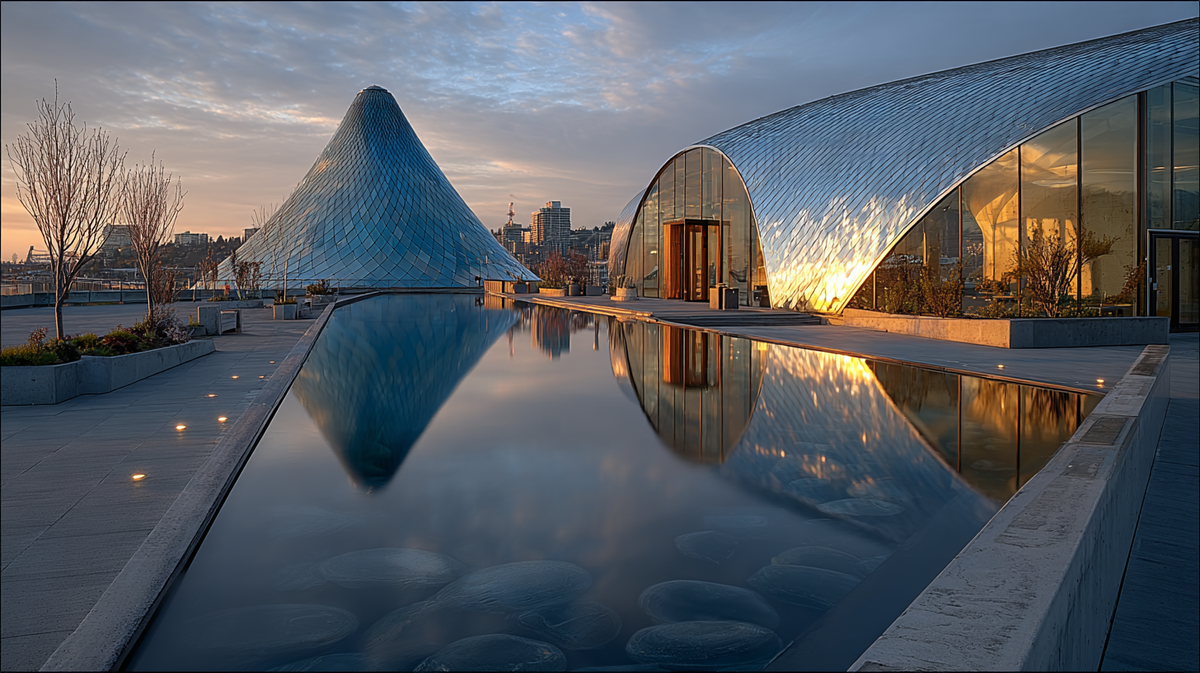
Embedding our gaze into the rich terrain of architecture where the human hand meets the machine mind, this long form essay invites you to walk through the world of Canadian architect Arthur Erickson.
It is a journey of story and structure. Of place and precision.
Here, architecture is not only concrete and glass. It is memory. It is movement. It is the stillness between forms.
We explore Erickson’s legacy not through blueprints alone but through the evolving lens of artificial intelligence. With Midjourney, we reimagine space. We study light. We trace the line where nature ends and design begins.
This is more than a portrait of a man. It is a conversation between past and future. One shaped by vision. Made vivid by technology.
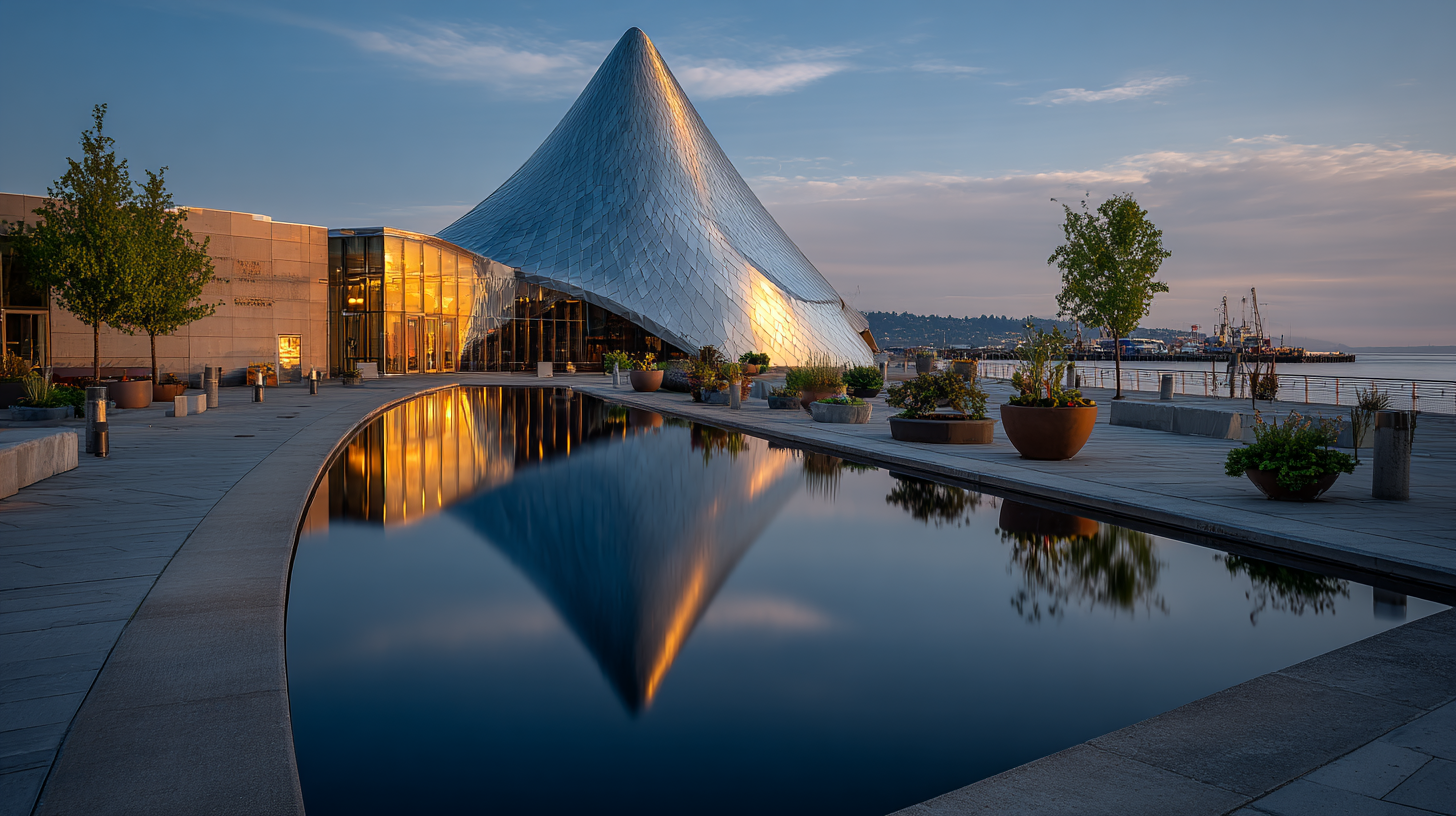
🌲 Introduction
In the quiet grey of Vancouver’s sky, a young boy watches cedar branches sway in the wind. The air smells of earth and sea. He sketches logs, stones, and water in a notebook. He watches and waits. He sees how the world fits together.
That boy grows into a man. The man becomes Arthur Erickson.
Buildings rise from his hands and mind. They stretch across hillsides. They settle into forests. They echo the land beneath them. Stone and glass merge with trees and streams. His architecture does not fight nature. It listens to it. It learns from it.
Erickson became one of Canada's most celebrated architects. His work spoke quietly but carried the weight of place. His buildings made space for stillness, for movement, and for meaning.
Now we live in an age where architecture can be imagined with words alone. Through tools like Midjourney AI, designs unfold from prompts and data. Light bends across imagined surfaces. Shadows fall where no sun exists. What does architecture become when technology takes the pencil?
Can we use AI to understand an architect who believed so deeply in earth and material? Can a prompt carry the weight of context and emotion? Can it hold water the way Erickson’s courtyards did?
This article explores those questions. It tells the story of Arthur Erickson’s life and legacy. It studies his philosophy and his buildings. It compares his voice with those of other masters. It explores how AI, especially Midjourney, can reimagine his work. It offers visuals rooted in his style. It explains camera settings and lighting angles for digital realism.
This is a journey across decades and into digital landscapes. It is built for storytellers, designers, and dreamers. It is for anyone asking what happens when memory, machine, and material meet.
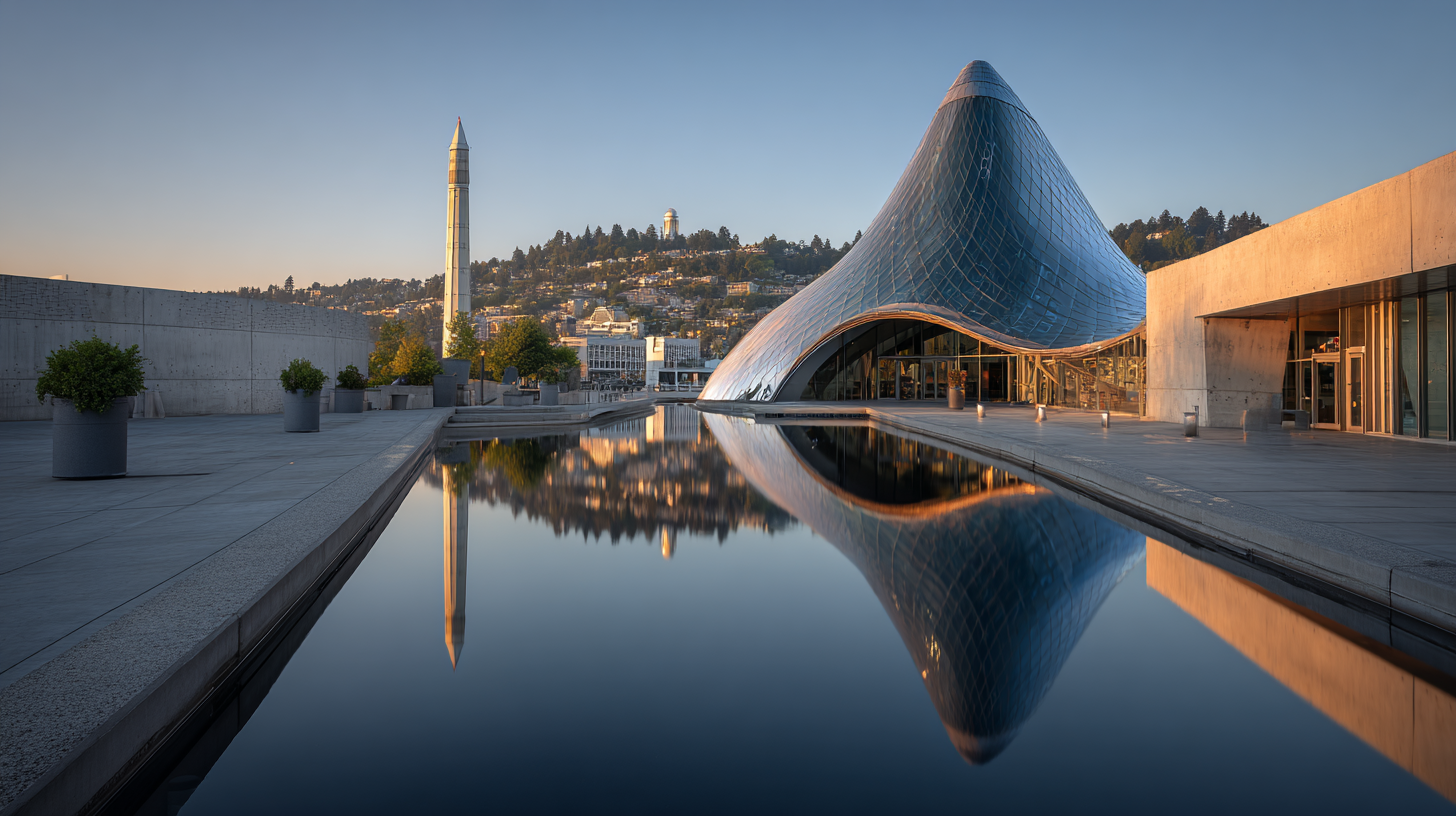
🏔️ The Man and His Time
🌿 Early Life and Formation
Arthur Charles Erickson was born on June 14, 1924, in Vancouver, British Columbia. The Pacific light and the quiet rhythm of the coast shaped his earliest memories. Ocean air. Rain-soaked cedar. Mountains that rose like sentinels over the city. The land itself became his first teacher.
He grew up in a home that honored beauty. His father, Oscar, was a horticulturist whose hands shaped living things with care. His mother, Myrtle, was a painter who saw the world in tone and texture. Together, they created a household where nature and art were inseparable. Erickson absorbed both disciplines, the precision of growth and the poetry of vision. What began as a childhood surrounded by gardens and canvases would become the foundation of his design philosophy.
Before architecture entered his life, the world did. Erickson served in the Canadian Army Intelligence Corps during World War II, stationed in India, Ceylon (now Sri Lanka), and Malaysia. Those years abroad widened his perception of place and culture. He learned how landscape and civilization could shape each other. The scale of temples, the rhythm of tropical light, the way water and stone met in silence, all of it stayed with him.
When the war ended, he came home with new purpose. He began his architectural studies at the University of British Columbia and later enrolled at McGill University’s School of Architecture in Montreal. There, he immersed himself in the principles of modernism but carried with him the memory of the Pacific coast. He graduated in 1950 with a Bachelor of Architecture (Honours), already marked by a quiet determination to weave nature into structure.
A transformative travel scholarship soon took him across the Mediterranean. He studied the ruins of Greece, the courtyards of North Africa, and the coastal villages of Southern Europe. He saw how climate and culture shaped form. He felt the ancient relationship between light and structure, between human dwelling and the earth. These were not simple observations. They were revelations.
From these journeys emerged a belief that architecture must begin with its surroundings. The land, the light, and the human experience were not afterthoughts. They were the starting point.
That conviction, rooted in the forests of British Columbia and refined under foreign suns, became the foundation of Arthur Erickson’s lifelong philosophy. His buildings would one day echo both his childhood garden and the landscapes of the world that shaped his imagination.
He remains a cornerstone of West Coast Modernism, an architectural language defined by honesty, restraint, and harmony with nature. His work continues to influence designers and dreamers around the world.
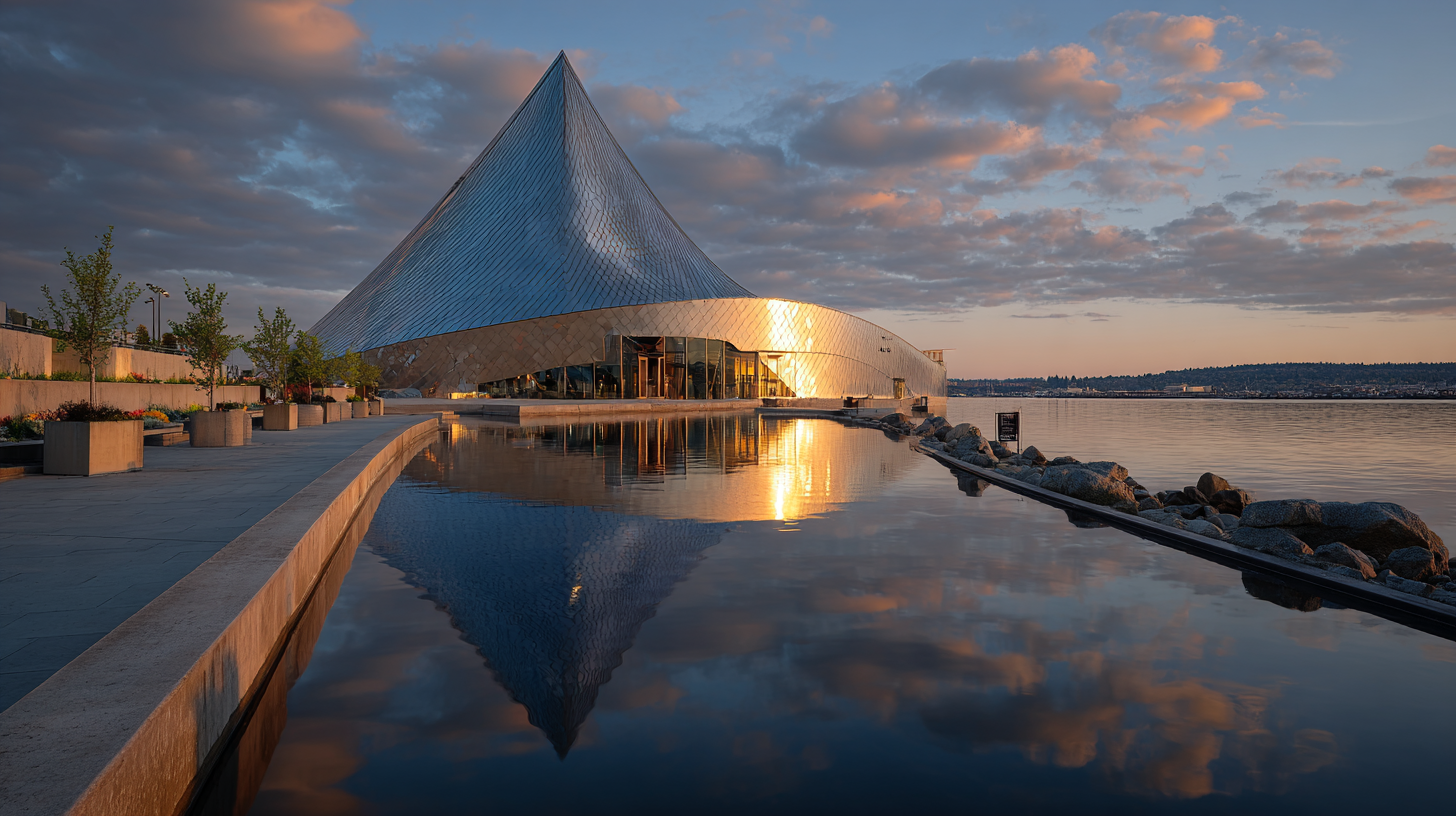
🏛️ Signature Projects and Career Milestones
Arthur Erickson’s career was a dialogue between form and feeling. His early buildings spoke in whispers. They were built with restraint. They used wood and stone. They opened themselves to the landscape. Interiors blurred into the outdoors. He designed homes that felt like shelters more than structures. Quiet like the forests he grew up in.
But as his vision matured, so did the scale of his work. His hand extended across universities, museums, embassies, and civic spaces. Yet no matter how large the project, the heart remained the same. Architecture rooted in place. Designed for people. Informed by nature.
Erickson never designed buildings that stood above the land. He believed they should rest within it. His was a modernism of softness, of silence, of strength that didn’t need to shout.
Some of his most iconic and enduring works include:
🎓 Simon Fraser University – Burnaby, British Columbia
Set high atop Burnaby Mountain, the campus of Simon Fraser University stands like a watchful mind above the forest. Designed in 1963 by Arthur Erickson, in collaboration with Geoffrey Massey, the university opened in 1965 as a bold reimagining of what higher education could look like.
From the beginning, it broke with convention. This was not a campus divided by roads or parking lots. It was not shaped by efficiency. It was shaped by land. By light. By the horizon itself.
Erickson envisioned the site as a modern Acropolis, inspired by his travels and his love for ancient forms. But instead of temples and marble, this was a place for concrete and ideas. Instead of fortification, it offered openness.
The buildings unfold horizontally along the mountain ridge. They stretch in dialogue with the topography, never competing with the slope, only extending it. The concrete is bold but never overbearing. The glass invites the sky. The whole campus feels anchored yet weightless, like a thought suspended above the city below.
“To me, architecture means unifying the duality of site and building,” Erickson once said. “It is the dialogue between building and setting that is the essence of architecture.”
The layout is deceptively simple. Long corridors form a spine from which the rest of the campus branches out. Elevated walkways cross open courtyards. Reflecting pools sit quietly beside lecture halls. Fountains break the stillness with soft movement.
Every element serves a purpose.
- Academic buildings are connected by breezeways and bridges.
- Open courtyards become spaces for gathering or solitude.
- Brutalist forms contrast with the softness of trees and clouds.
- Concrete surfaces change color as the light shifts through the day.
From above, the structure appears as a geometric whisper across the mountain. A precise plan drawn with deep respect for natural form. It is a university, but it reads like a piece of land art.
To walk its grounds is to experience layers of time and thought. The architecture slows the pace. It encourages pause. It welcomes conversation in one moment, and contemplation in the next. The sky is ever-present. The trees are always near.
Erickson did not believe in designing spaces for the sake of structure. He believed in shaping environments for the mind. For the spirit. For the quiet questions that rise between lectures and moments of stillness.
Simon Fraser University is not only a place to study. It is a place to feel thought unfold. It gives form to intellect, inquiry, and imagination. Its design does not push forward with noise. It listens, and in doing so, it inspires.
Today, it stands as one of Erickson’s most studied and celebrated works. A touchstone of West Coast modernism. A living demonstration of how architecture can be rooted in land while reaching toward light.
This is not just a campus.
It is a cathedral of learning, open to the wind.
It is a citadel of thought, shaped by the slope of a mountain.
It is a place that holds the sky.
SFU Archives continues to preserve and celebrate the early documents and design legacy that shaped the campus. Through them, we remember not only the structure but the intention behind it.
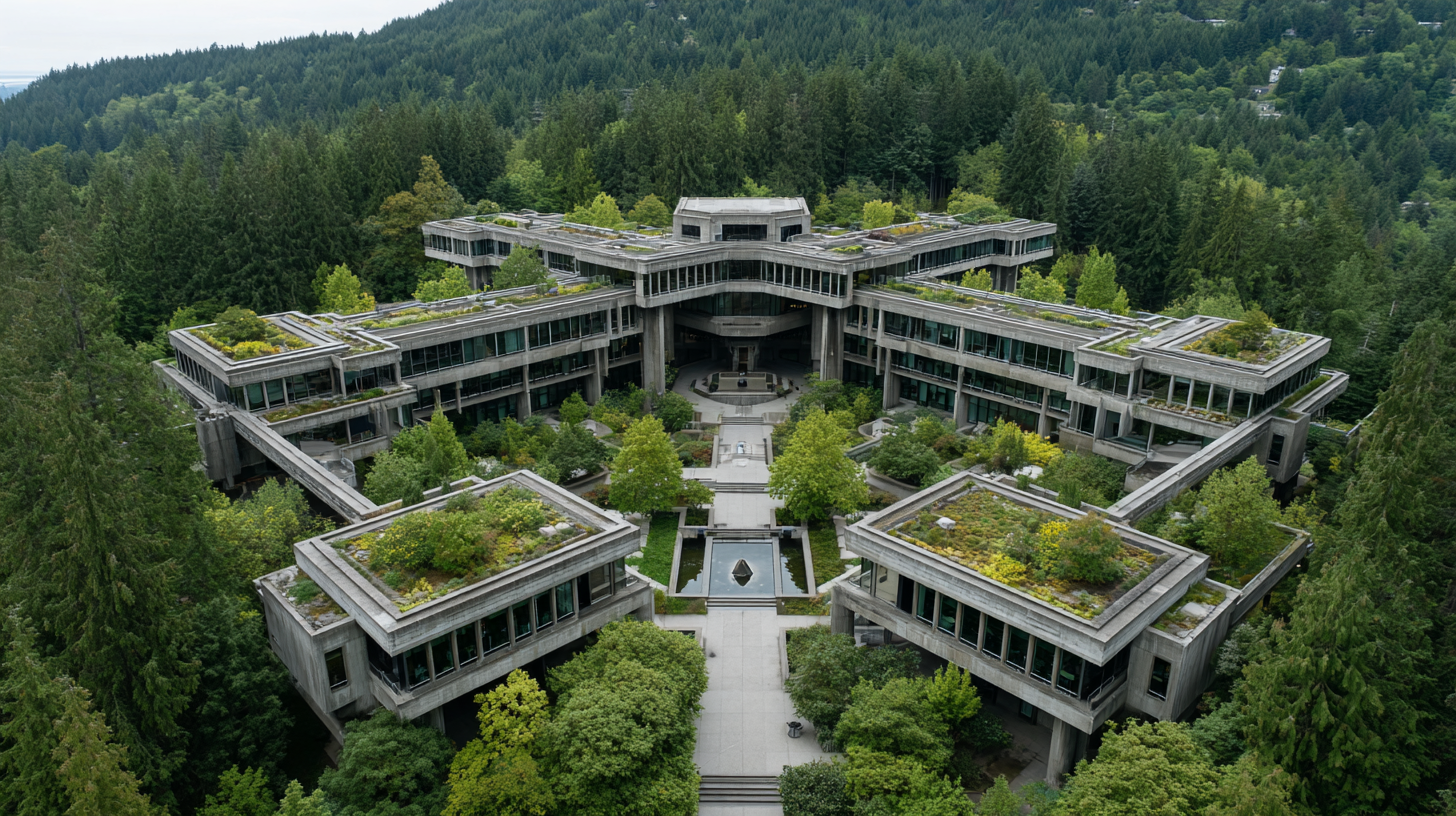
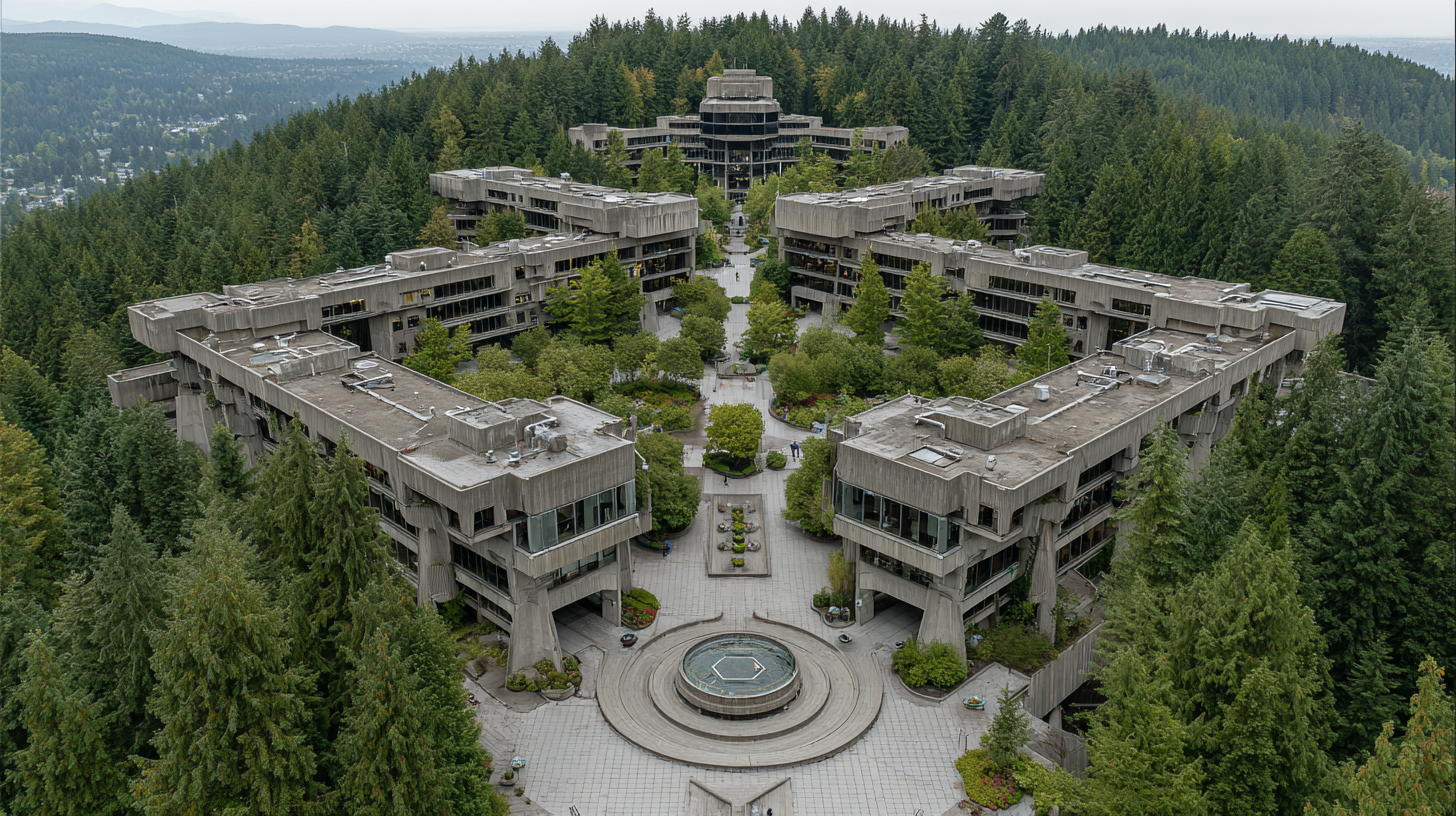
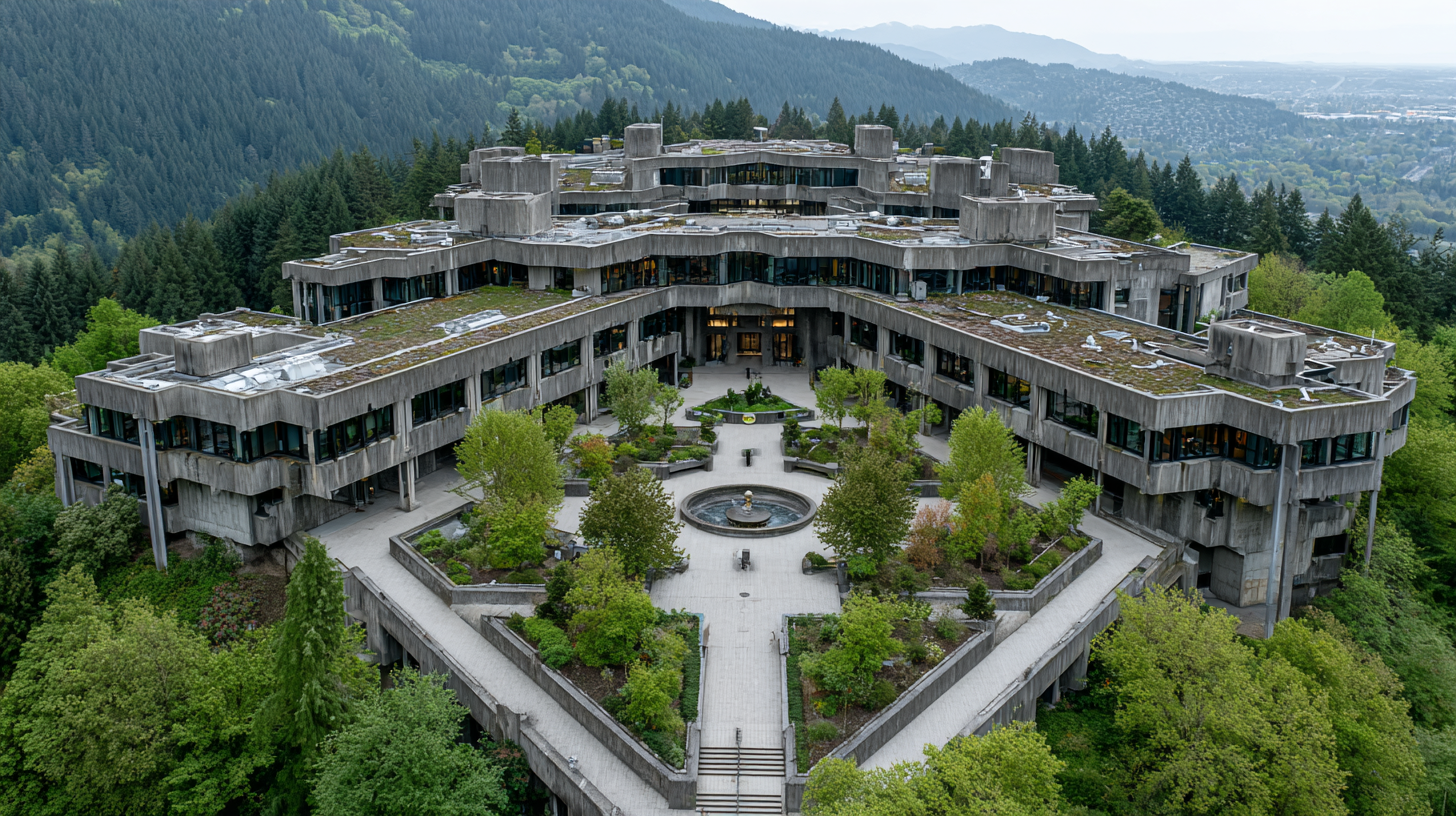
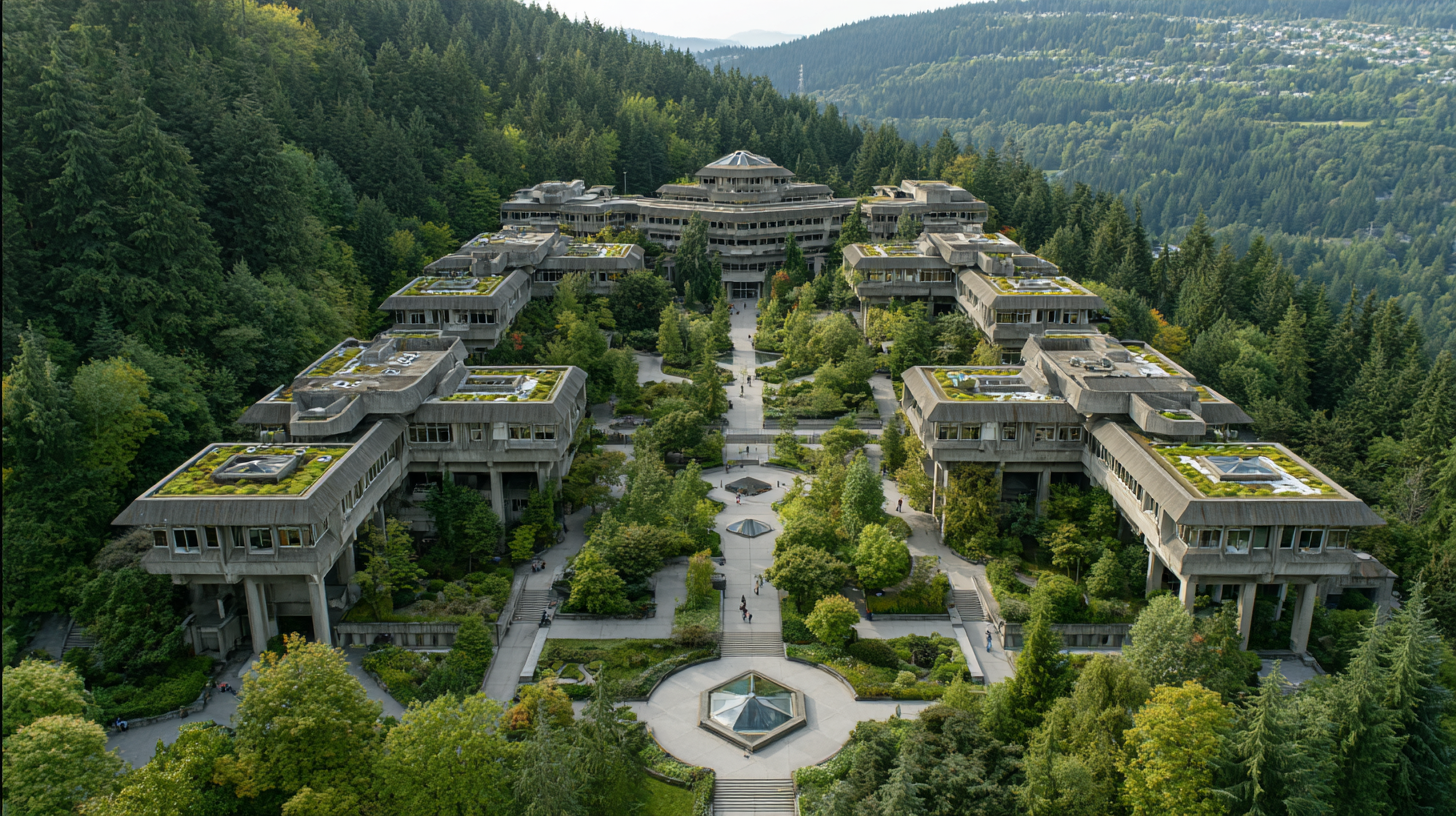
🧭 Museum of Anthropology – University of British Columbia
Completed in 1976, the Museum of Anthropology at UBC is one of Arthur Erickson’s most iconic and emotionally resonant works. It stands not only as a museum, but as a sacred space. A space that honors the First Nations of the Pacific Northwest. A space that teaches through silence, scale, and shadow.
This building was never meant to house objects. It was meant to hold memory.
Inspired by Indigenous post and beam traditions, Erickson drew upon the architectural language of longhouses, transforming it through the lens of concrete, glass, and light. His goal was not imitation. It was interpretation. A way to honor the cultural spirit embedded in the land while creating a structure rooted in modern clarity.
- Massive concrete colonnades rise like sentinels.
- Their weight speaks of time, ritual, and permanence.
- Still ponds rest in front of the façade, reflecting both sky and story.
- Glass walls dissolve the boundary between building and landscape.
- Towering cedar trees press in from every side.
Inside, the space breathes. Light floods in from above. Shadows shift across floors of stone and earth-toned concrete. The gallery never feels like a sealed room. It feels like a gathering place.
Here, Indigenous carvings and totems are not isolated or staged. They are part of a living continuum. Erickson placed them in environments shaped by air and openness, where the past speaks quietly into the present.
Outside, the museum is embraced by forest, ocean, and sky. The building does not sit on the land. It emerges from it. It respects it. Its form bends to the coastline. Its lines echo the natural rhythm of the site.
The Museum of Anthropology is both monument and memory. It stands with presence but never arrogance. It invites reflection. It slows the visitor. It asks them to listen.
For Erickson, this was the true power of architecture. To translate culture into space. To make silence visible. To give form to history without overpowering it.
To this day, the museum remains one of the most celebrated examples of West Coast modernism. It is studied by architects, admired by visitors, and remembered by those who leave it changed.
It is a building that listens.
It is a building that teaches.
And it is, perhaps, the clearest reflection of Arthur Erickson’s architectural soul.
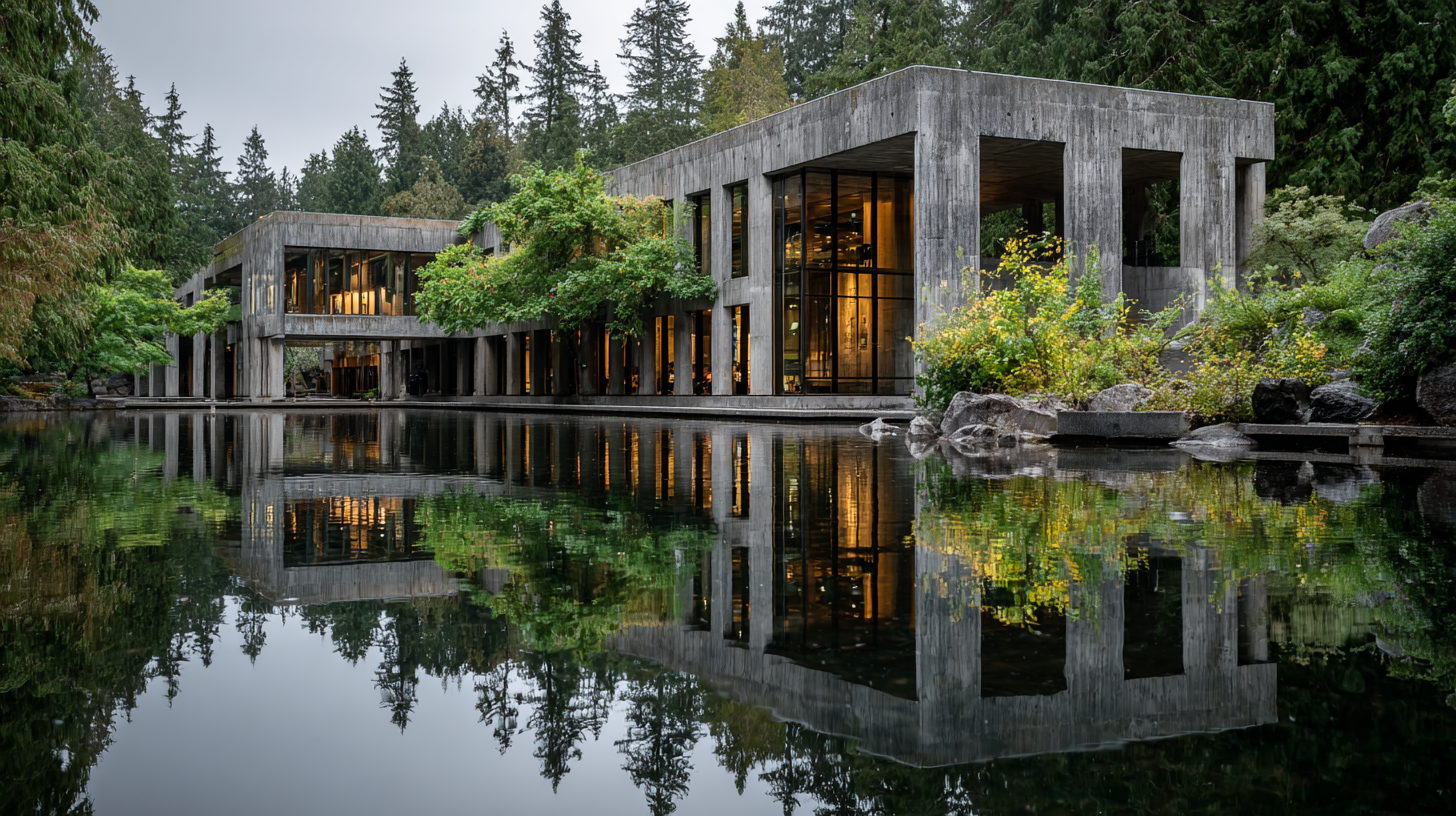
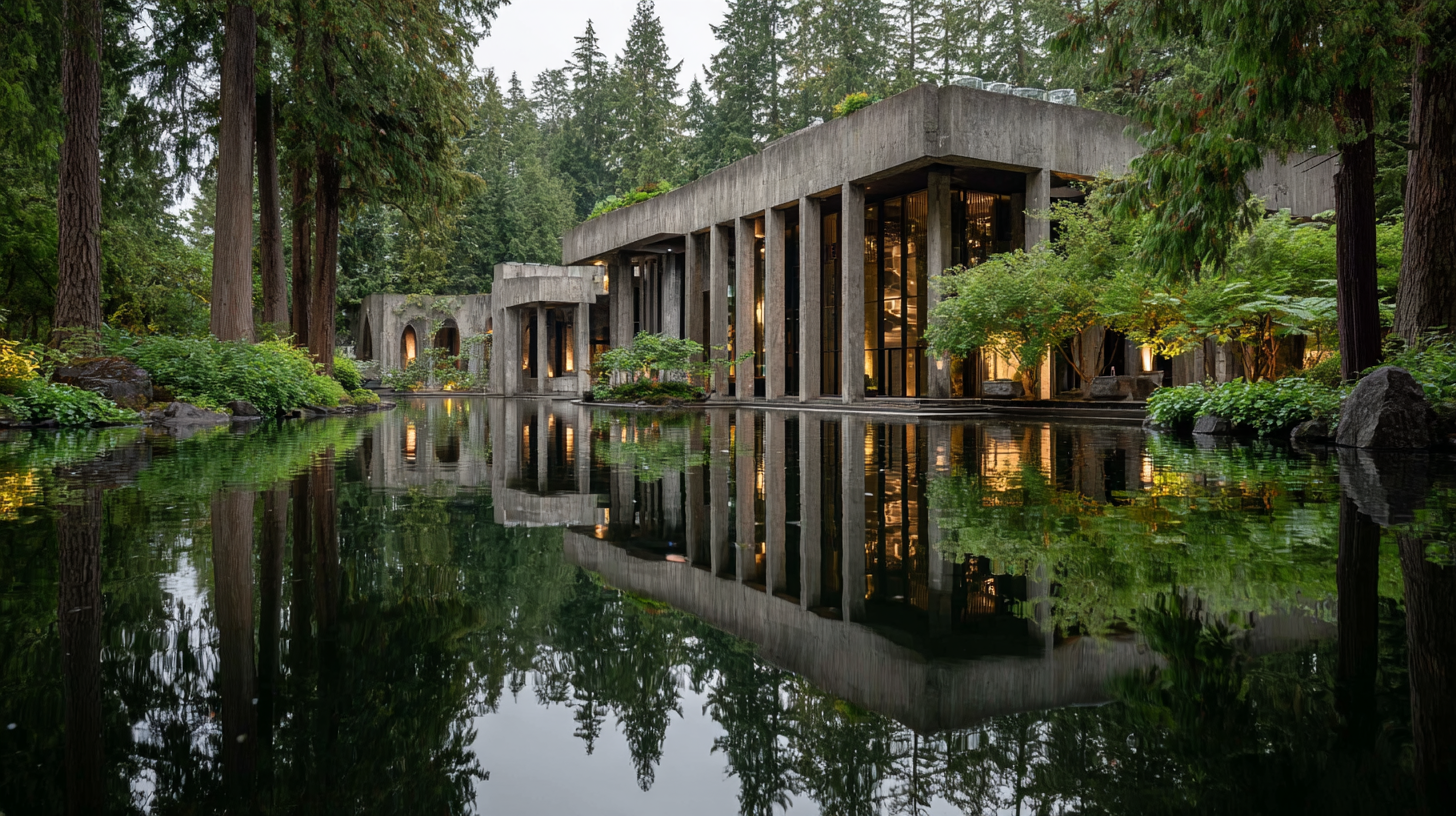
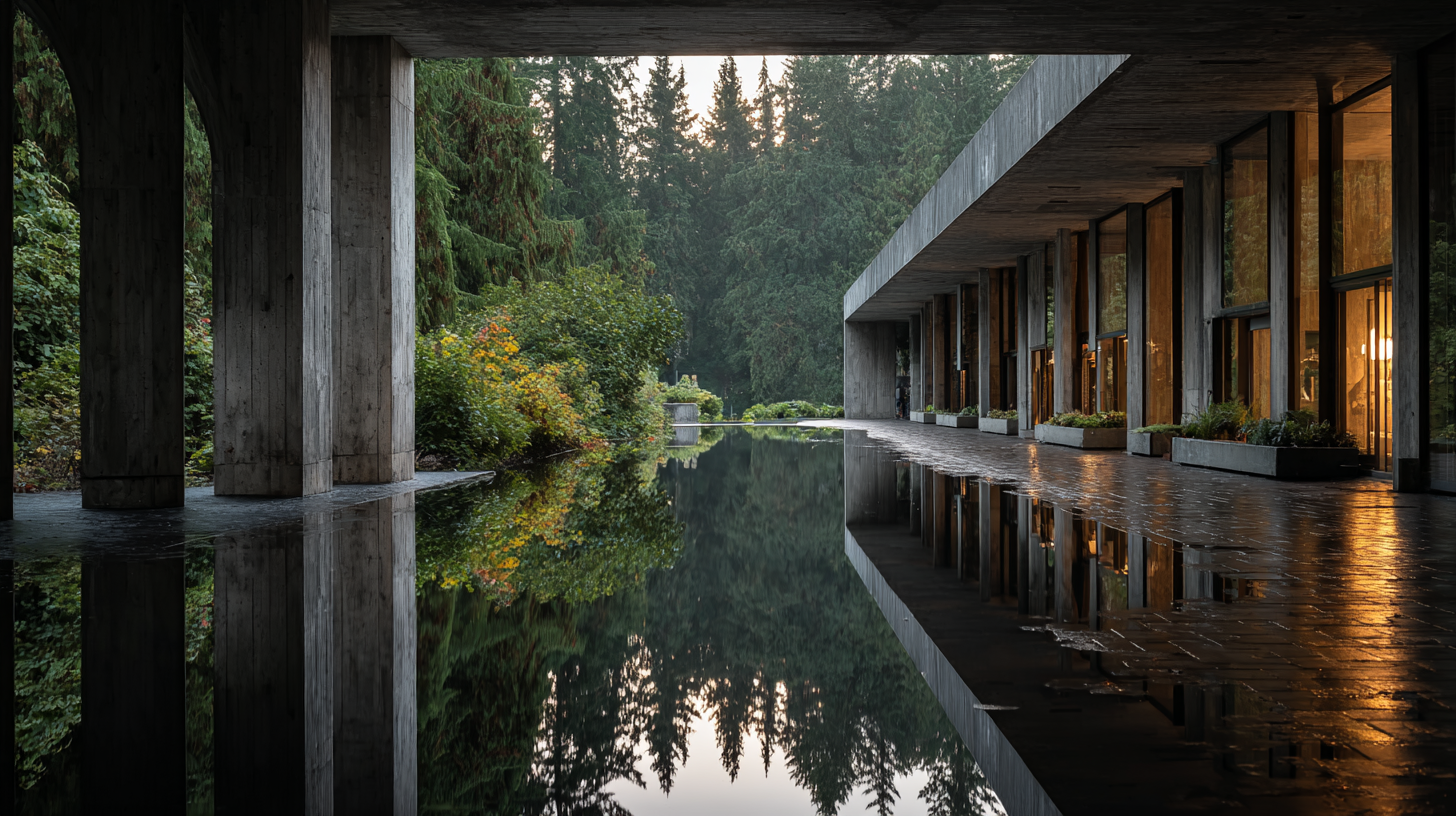
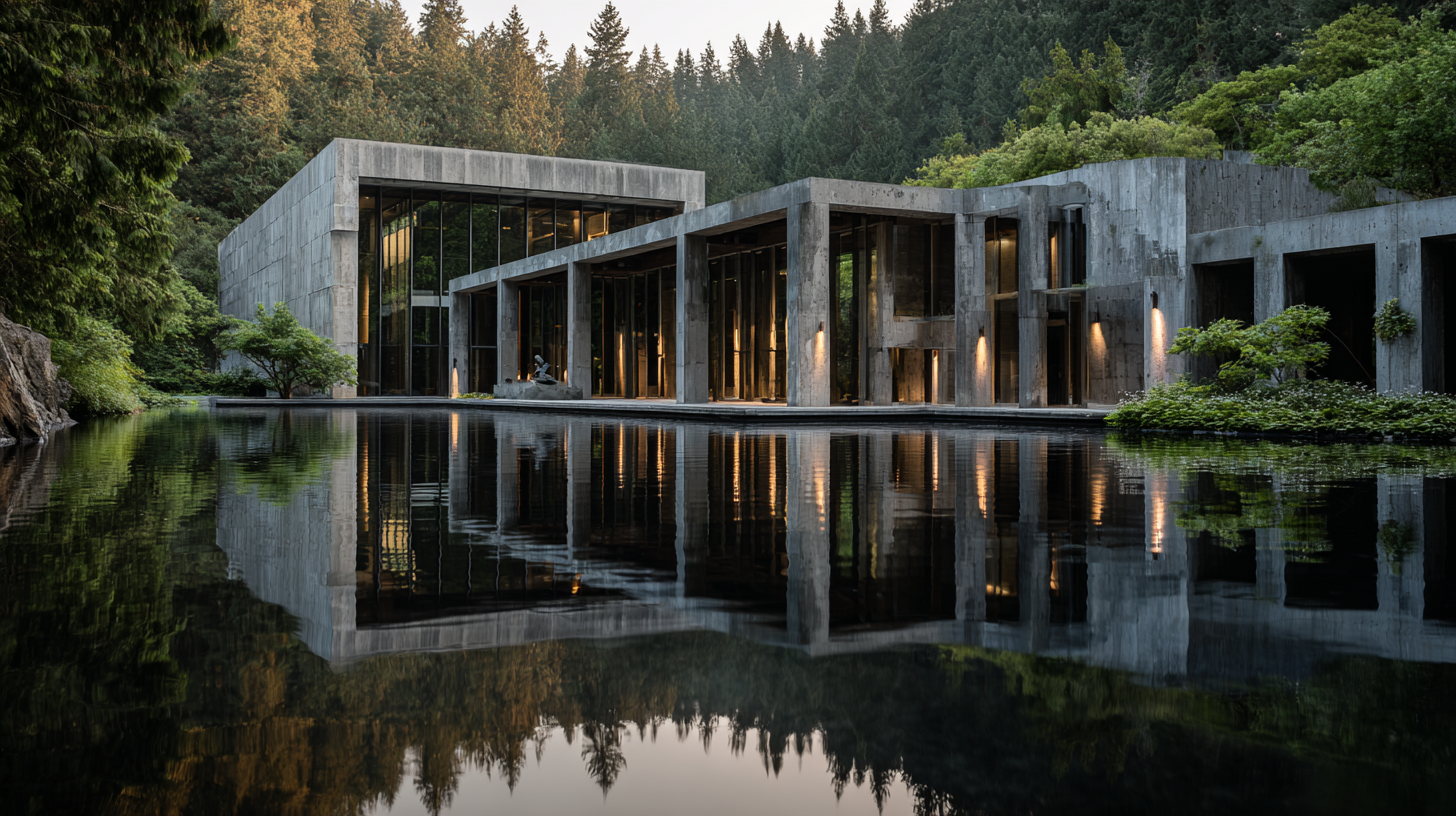
🖼️ Vancouver Art Gallery Proposal – A Vision That Waited
In the heart of downtown Vancouver, Arthur Erickson imagined something bold. A cultural space rooted in clarity, light, and civic connection. His design for the Vancouver Art Gallery was ambitious. It was never built in full. But the proposal itself speaks volumes about his architectural soul.
Erickson’s vision was not for a monument. It was for a gathering space. A center where art, community, and landscape would come together. His sketches showed public terraces and transparent walls. They invited the city in.
This was not a closed gallery. It was an open gesture.
The plaza extended naturally into the street.
Water elements echoed Robson Square.
The building’s mass dissolved into glass, stone, and tree lines.
He wanted art to exist among the people. To be seen from outside. To be part of daily life. Not separated by thresholds or formality.
Although the project was ultimately shelved and a new vision took its place years later, Erickson’s design remains one of Vancouver’s most poetic unbuilt works. It reflected his unwavering belief that architecture should be accessible. That civic buildings should give more than they take.
His gallery concept felt like a continuation of his Robson Square philosophy.
It was low. Not tall.
Transparent. Not closed.
Generous. Not imposing.
To many, it is still a question that lingers in West Coast architecture. A moment when the city might have embraced something quieter.
Today, the memory of that proposal lives on through archived drawings. Through foundation talks and community dialogue. Through design conversations that ask not what was built but what could have been.
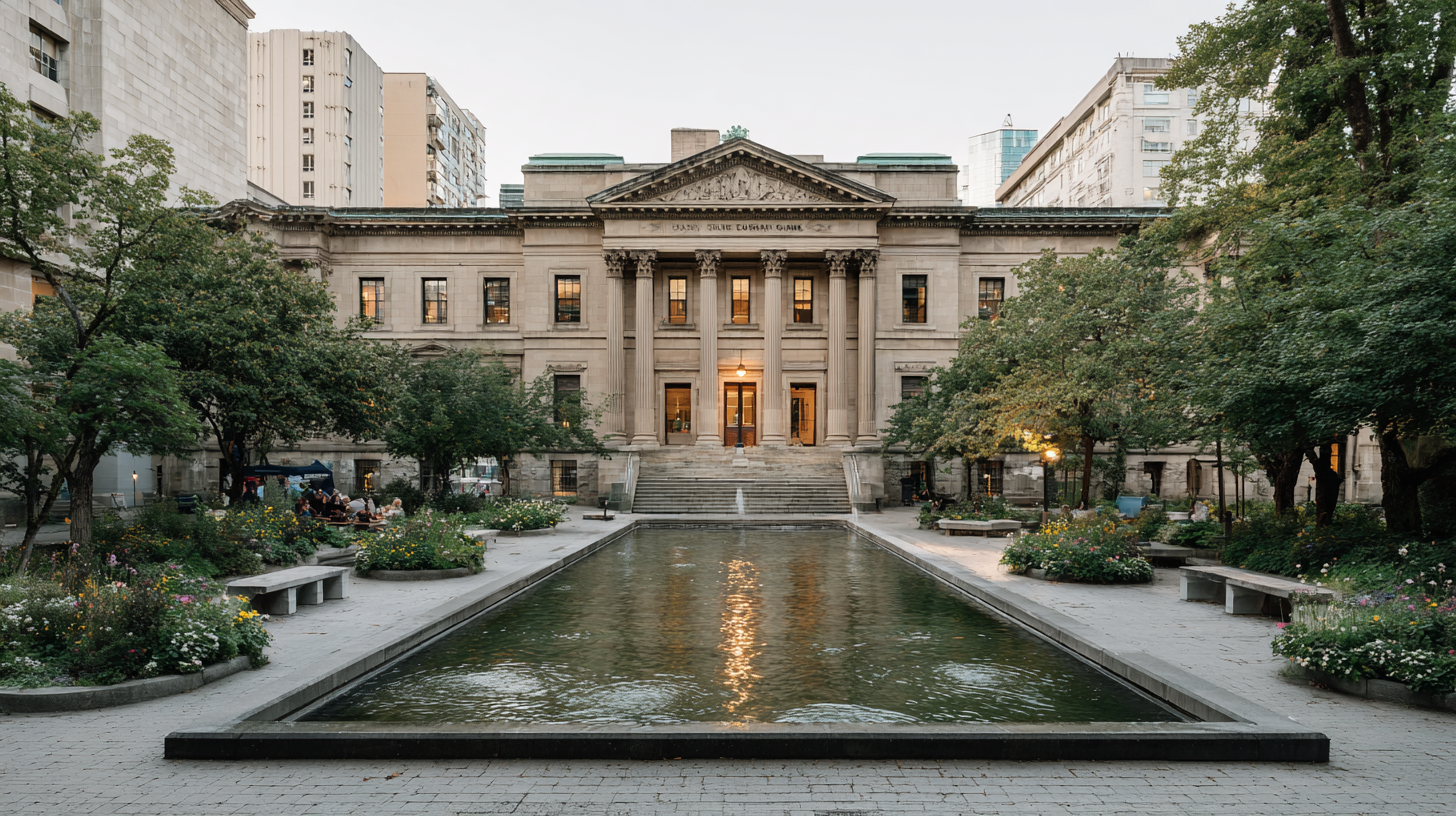
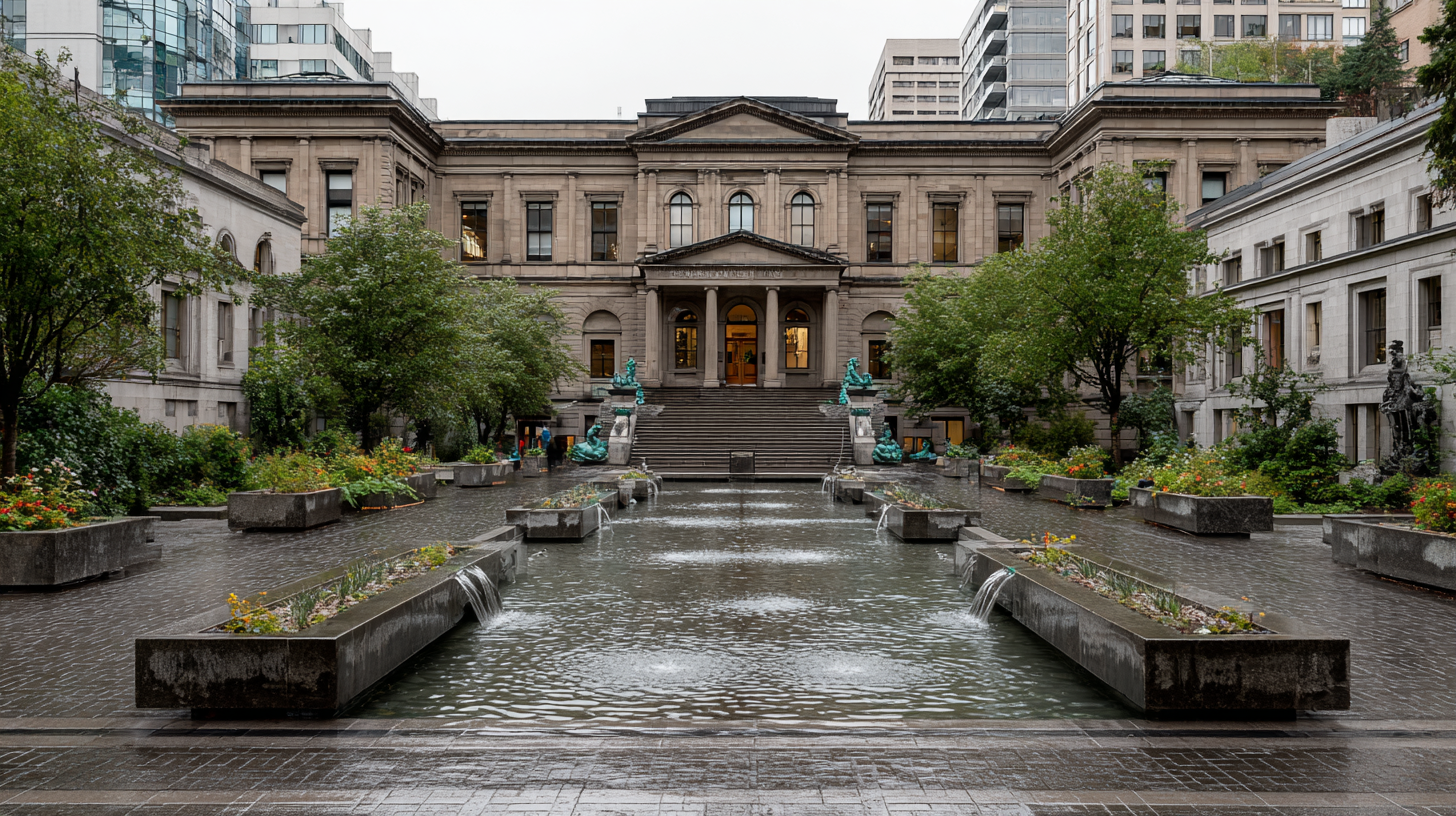
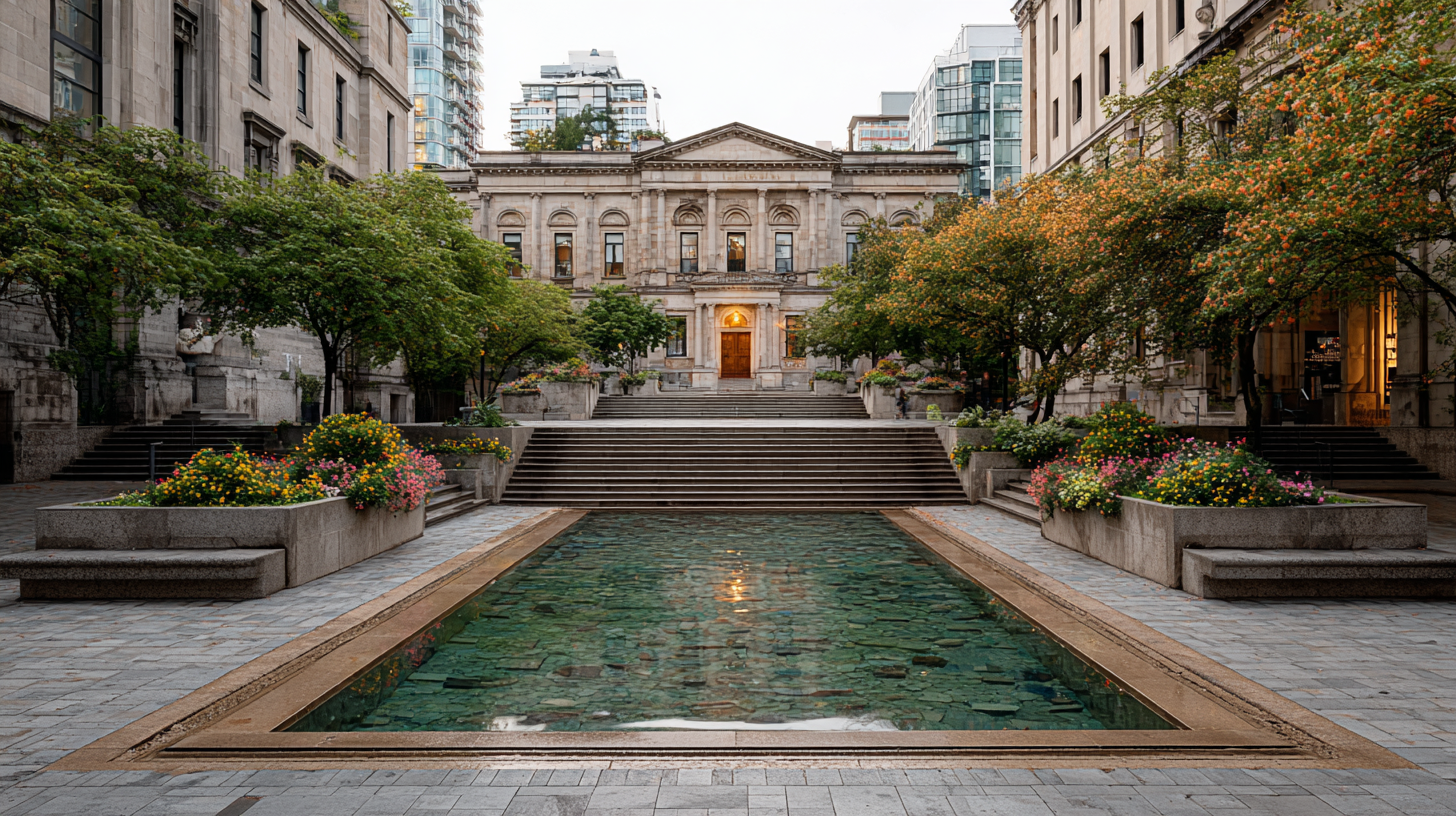
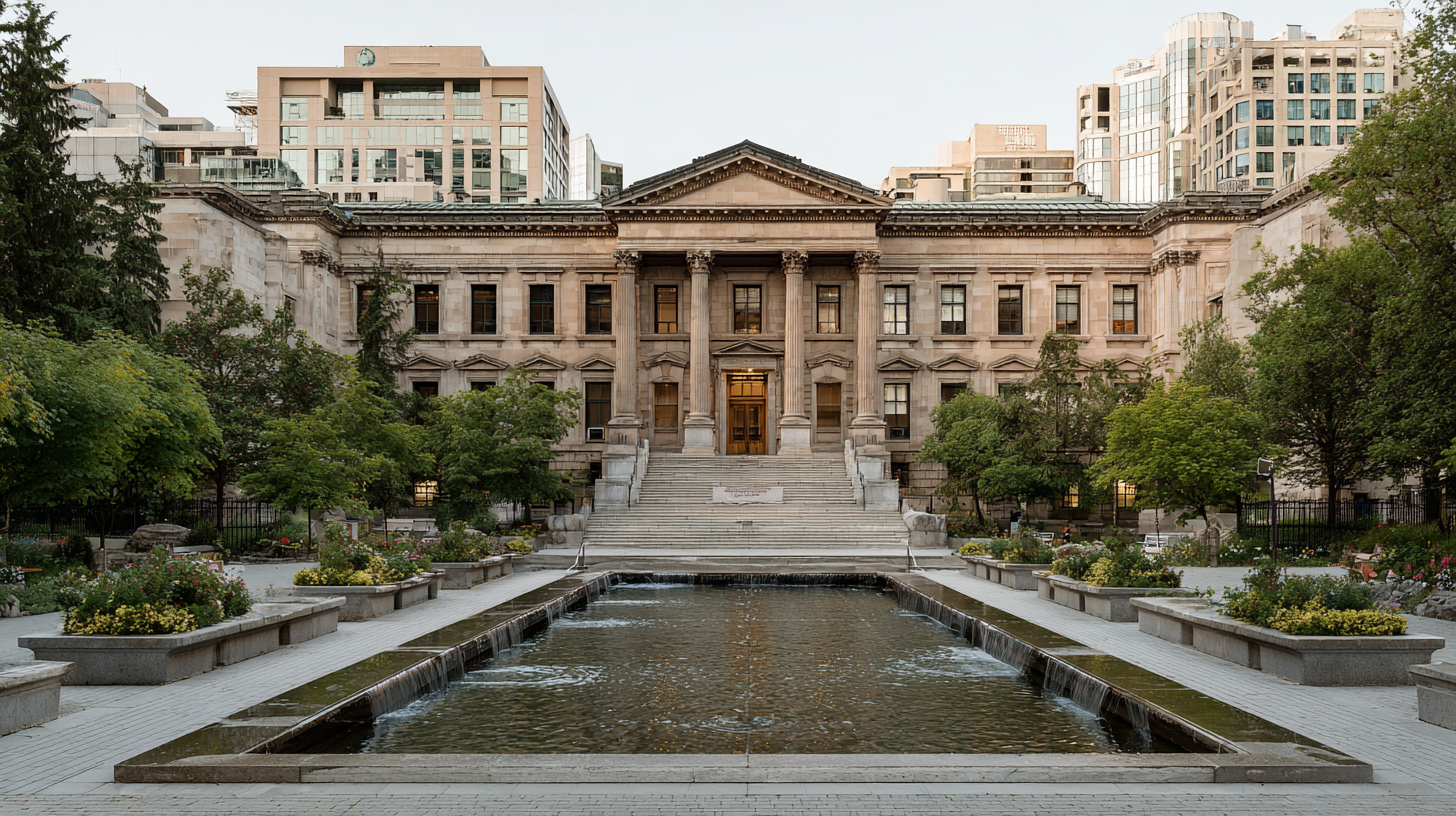
🌿 Robson Square and the Law Courts Complex – Downtown Vancouver
Few civic spaces capture the spirit of Arthur Erickson’s philosophy as profoundly as Robson Square. Completed in stages between 1973 and 1983, this project transformed the heart of downtown Vancouver into something entirely new. It was not just a government center. It was a landscape. A civic garden. A public heart for the city.
At its core, Robson Square is a conversation between law, life, and land. It connects people to place in a way few urban spaces ever achieve. Erickson envisioned a courthouse that would not tower above citizens but sit beside them. A place where justice would be seen, felt, and lived within the fabric of the city.
The design unfolds gently across three city blocks. The Law Courts, provincial government offices, and public plaza merge together beneath terraces of water, glass, and green life. The architecture is bold, yet it never feels aggressive. Instead, it feels alive.
- Terraces cascade with streams and foliage.
- Sunken walkways invite quiet exploration.
- Reflecting pools soften the edges of concrete.
- Steps curve gracefully beside waterfalls and shaded pavilions.
Erickson once described architecture as “a journey through space.” Robson Square embodies that idea perfectly. Every path feels intentional. Every sightline reveals something new. The visitor experiences rhythm, pause, and reflection as they move through light, shadow, and sound.
Here, water plays a central role. It flows beside benches, along steps, and under bridges. It cools the air and calms the mind. The movement of water turns concrete into something human. The sound of it echoes through the city like a heartbeat.
Erickson designed Robson Square to humanize bureaucracy. The courts are not hidden behind walls or symbols of power. They are open, accessible, and transparent. Justice, he believed, should belong to everyone. By embedding the Law Courts within gardens and walkways, he transformed civic space into public sanctuary.
Even decades later, Robson Square continues to thrive. It remains a place where skaters, students, judges, and families all share the same ground. It bridges opposites. Nature and structure. Serenity and motion. Private reflection and public gathering.
In winter, the fountains freeze into sculpture. In summer, the pools shimmer beneath sunlight. The plaza holds concerts, protests, weddings, and moments of stillness. It is one of Vancouver’s living symbols of West Coast modernism, where concrete breathes and green life softens every line.
Robson Square is not just a civic project. It is a philosophy made visible. It shows that architecture can be both monumental and humane. It proves that design, when rooted in empathy and place, can serve everyone who passes through it.
For Erickson, this was always the goal. Architecture should not dominate. It should invite. It should include. It should endure. Robson Square does all three. It remains one of the most meaningful examples of what happens when modernism listens. It listens to people. It listens to water. It listens to the land beneath the city.
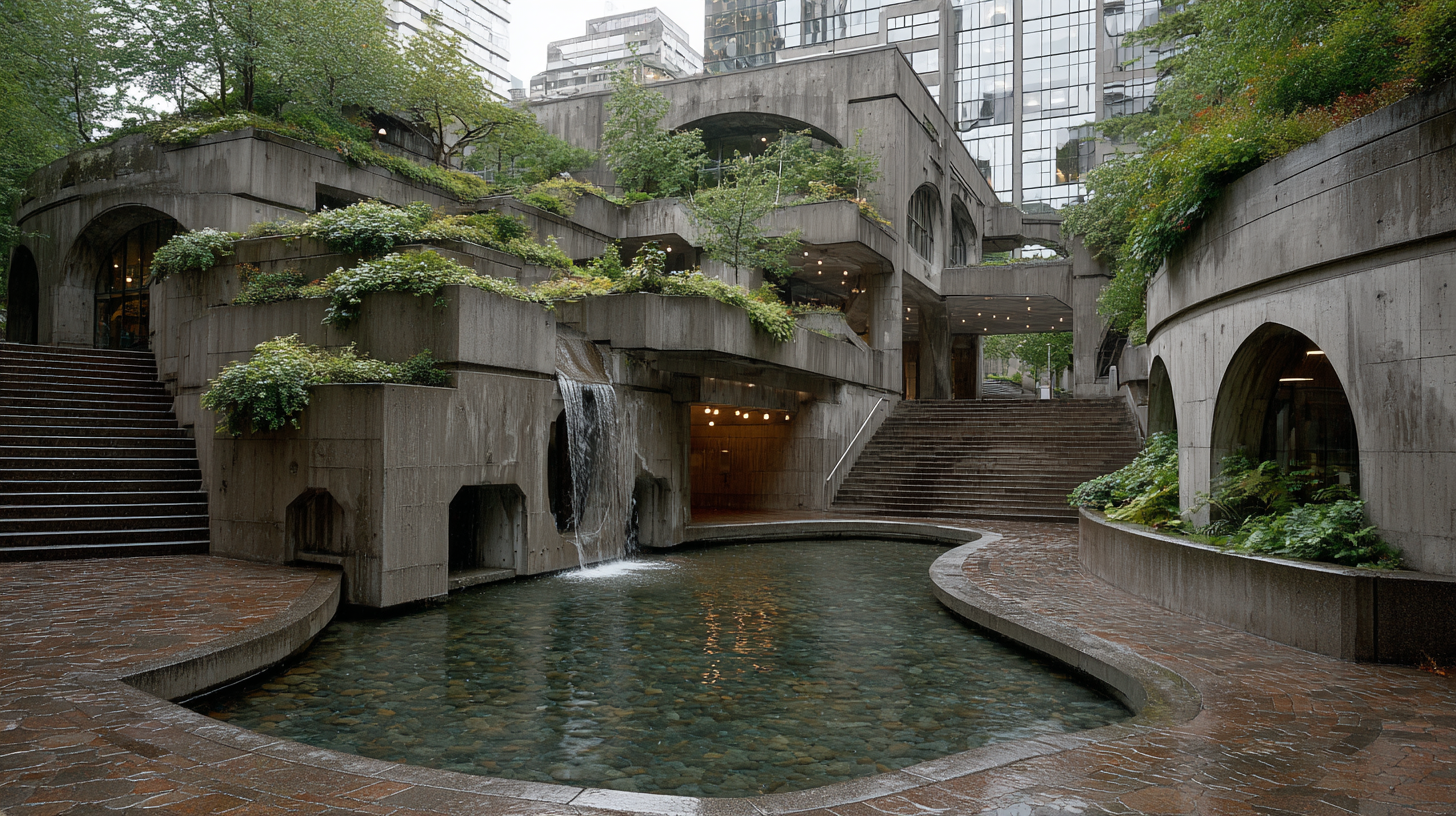
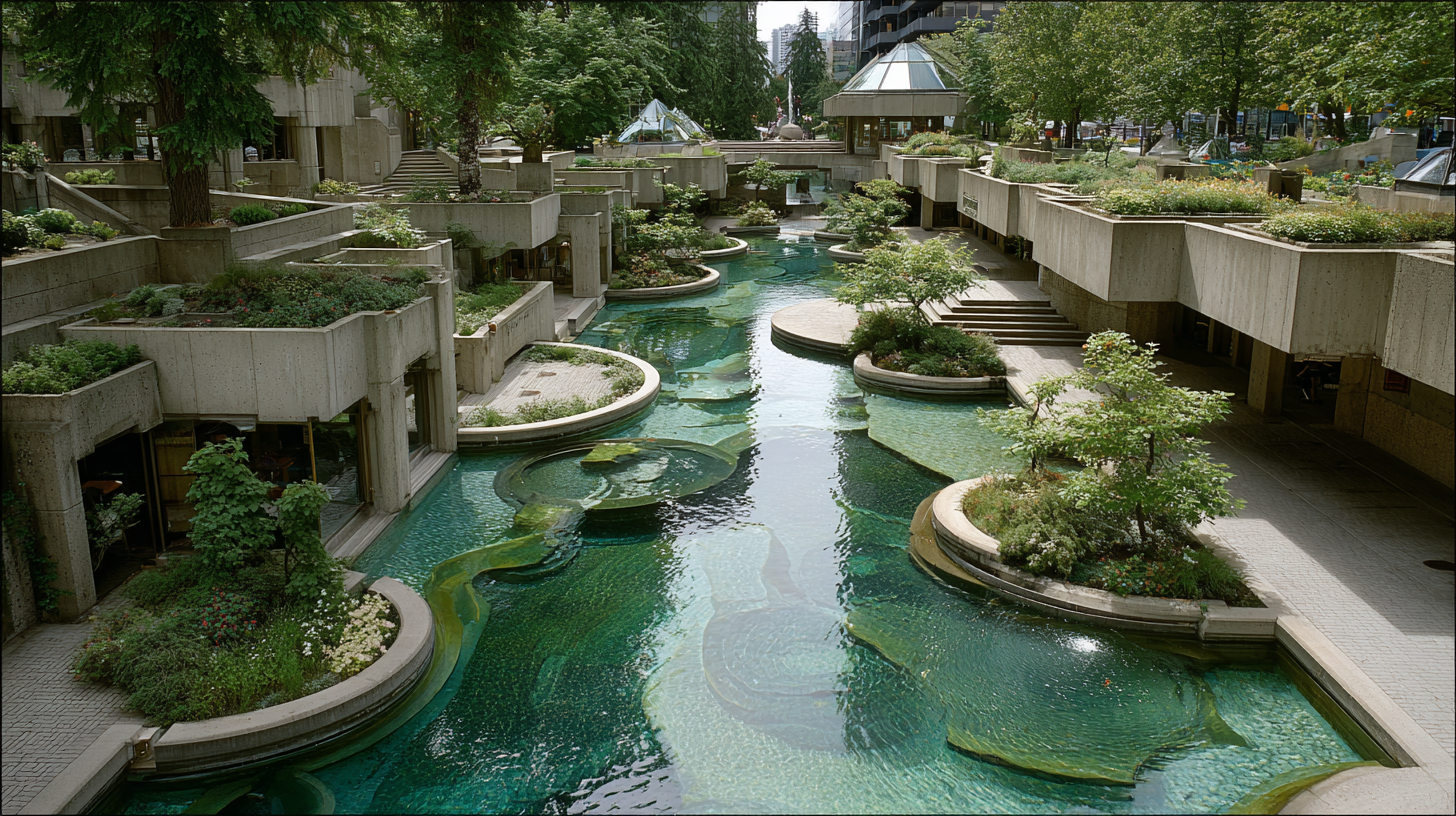
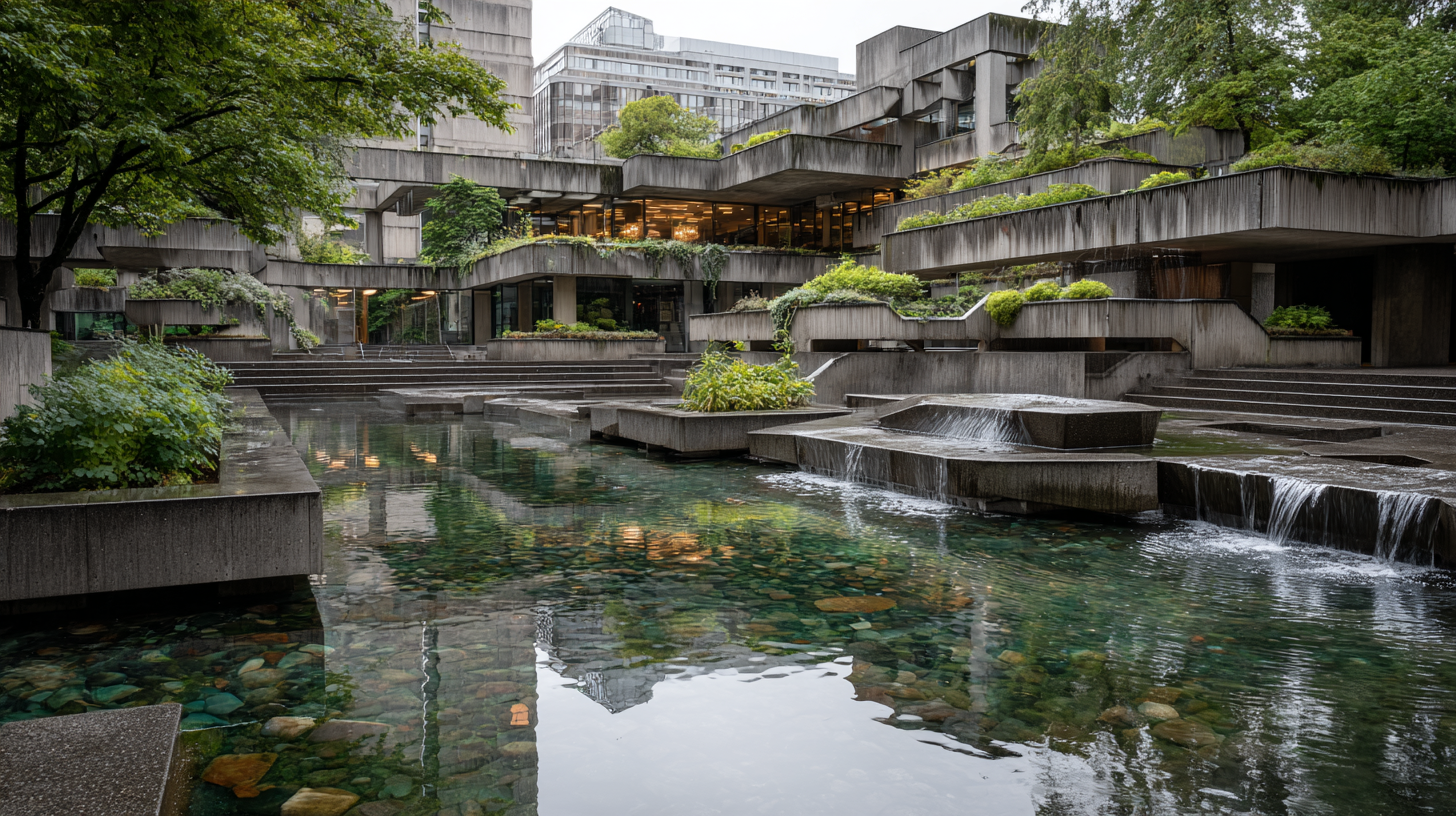
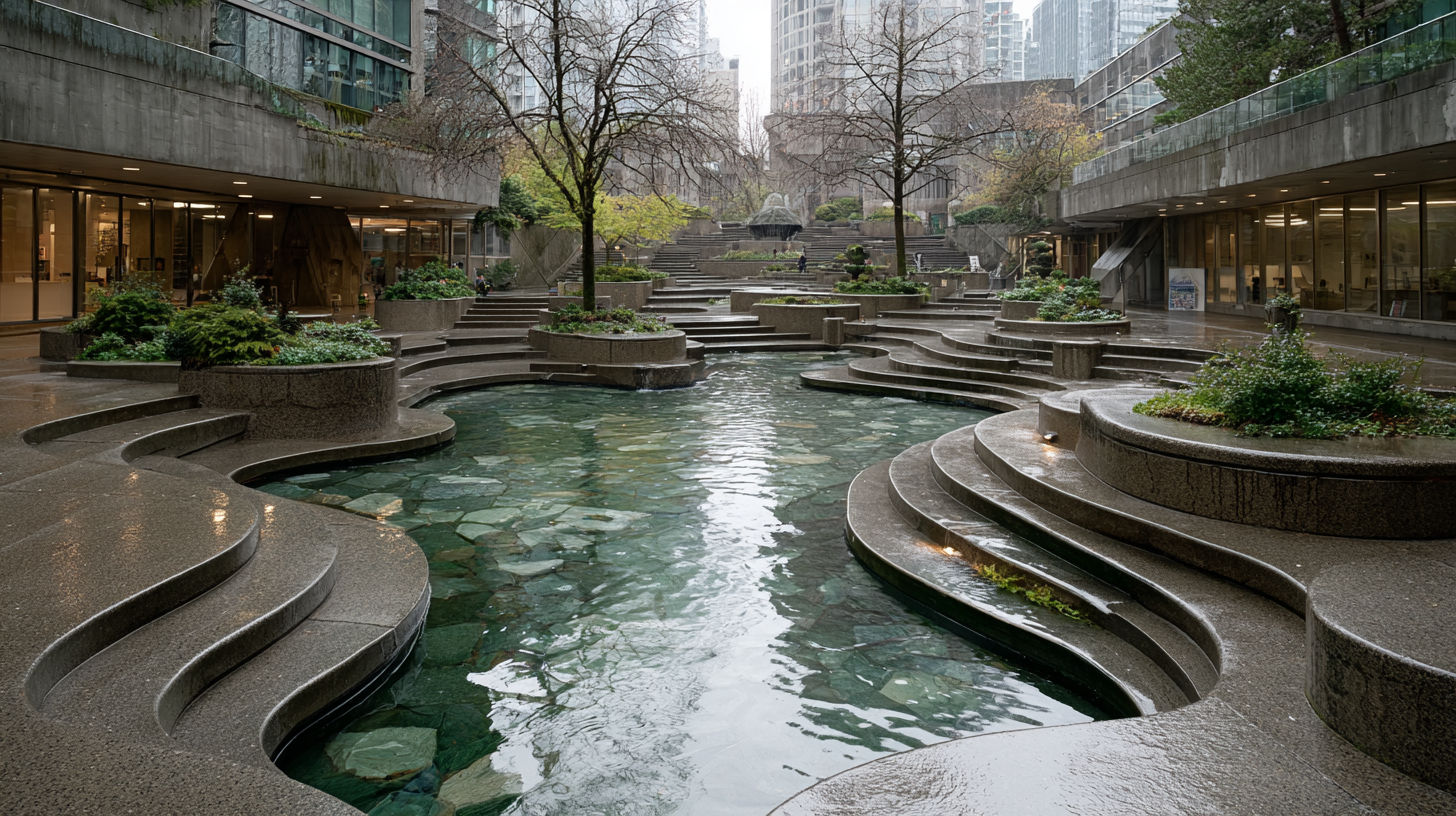
🏙️ Urban Legacy and Enduring Influence
Arthur Erickson’s architecture was never confined to the forested edges of the Pacific coast or the academic sanctuaries of higher learning. It stretched into the urban heart of Canada’s cities. His hand shaped skylines. His mind reshaped the idea of modern elegance in steel and glass.
He brought the same thoughtful restraint to financial centers and corporate towers that he did to museums and universities. To Erickson, beauty belonged in boardrooms as much as it did beside waterfalls.
🏢 Royal Bank of Canada Headquarters and Major Urban Projects
Arthur Erickson’s architectural language was not limited to museums, universities, or cultural sanctuaries. It spoke fluently in the language of cities. His vision, rooted in nature, found form even in the density of concrete, glass, and steel.
He brought grace and clarity to the heart of Canada’s urban fabric.
Where others might have leaned into spectacle, Erickson leaned into restraint. He understood the tempo of cities. The rhythm of foot traffic. The shadow lines of towers. The soft silence between the chaos. His work whispered even in places where others shouted.
Among his most well-known contributions to Canada’s business districts was the Royal Bank of Canada Headquarters. Completed in the mid-1970s and located in Toronto, this commercial project showed that modernism and monumentality could live alongside elegance and control.
This was not brutalism for its own sake. This was architectural discipline.
In Erickson’s urban designs:
- Concrete met commerce, but with poise.
- Steel rose, but without arrogance.
- Glass reflected the city, not as spectacle, but as memory.
He believed that even the most functional buildings deserved beauty and intention. Boardrooms could breathe. Office towers could listen. Street-level interactions could feel human.
Every surface had a purpose.
Every line respected the skyline.
Every angle had something to say about light.
Erickson never allowed the urgency of business to overtake the purpose of design.
His materials stayed honest.
His proportions remained measured.
His forms felt grounded even when they reached toward the clouds.
In cities like Toronto, Vancouver, Ottawa, and beyond, Erickson’s influence extended into spaces of governance, trade, and public life. He designed embassies, courthouses, conference centres, and commercial complexes—each shaped with the same clarity and compassion as his cultural works.
He reminded the world that architecture does not stop serving humanity when it enters a financial district.
It still matters how a space feels.
It still matters what it reflects.
It still matters how it holds the light.
In many ways, these urban projects were proof of his core belief. That architecture should respond to its environment. And that even when the environment is all glass and motion, the building can still pause. It can still speak softly.
Elegance, for Erickson, was never decoration.
It was responsibility.
It was discipline.
It was ethics made visible in form.
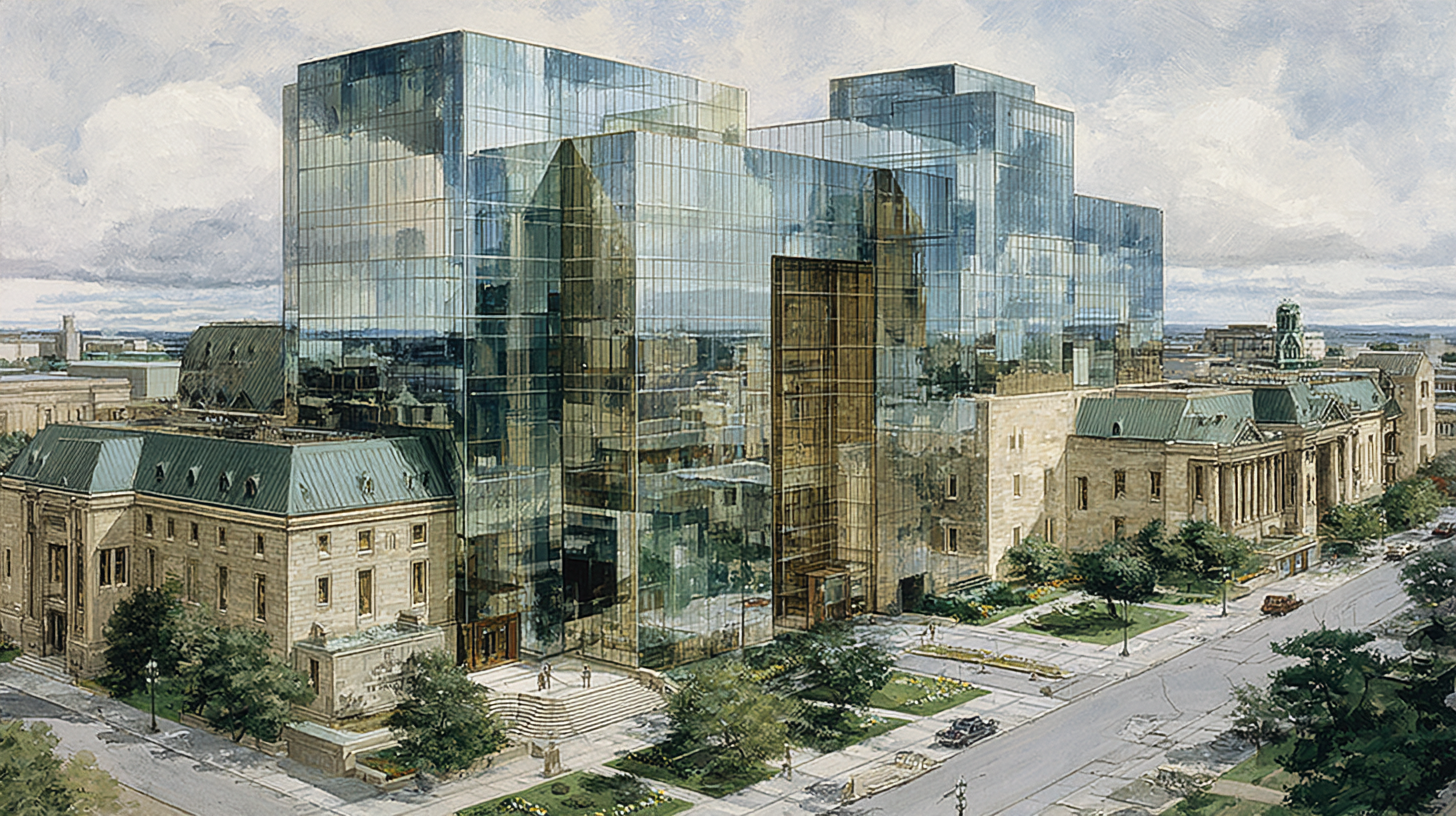
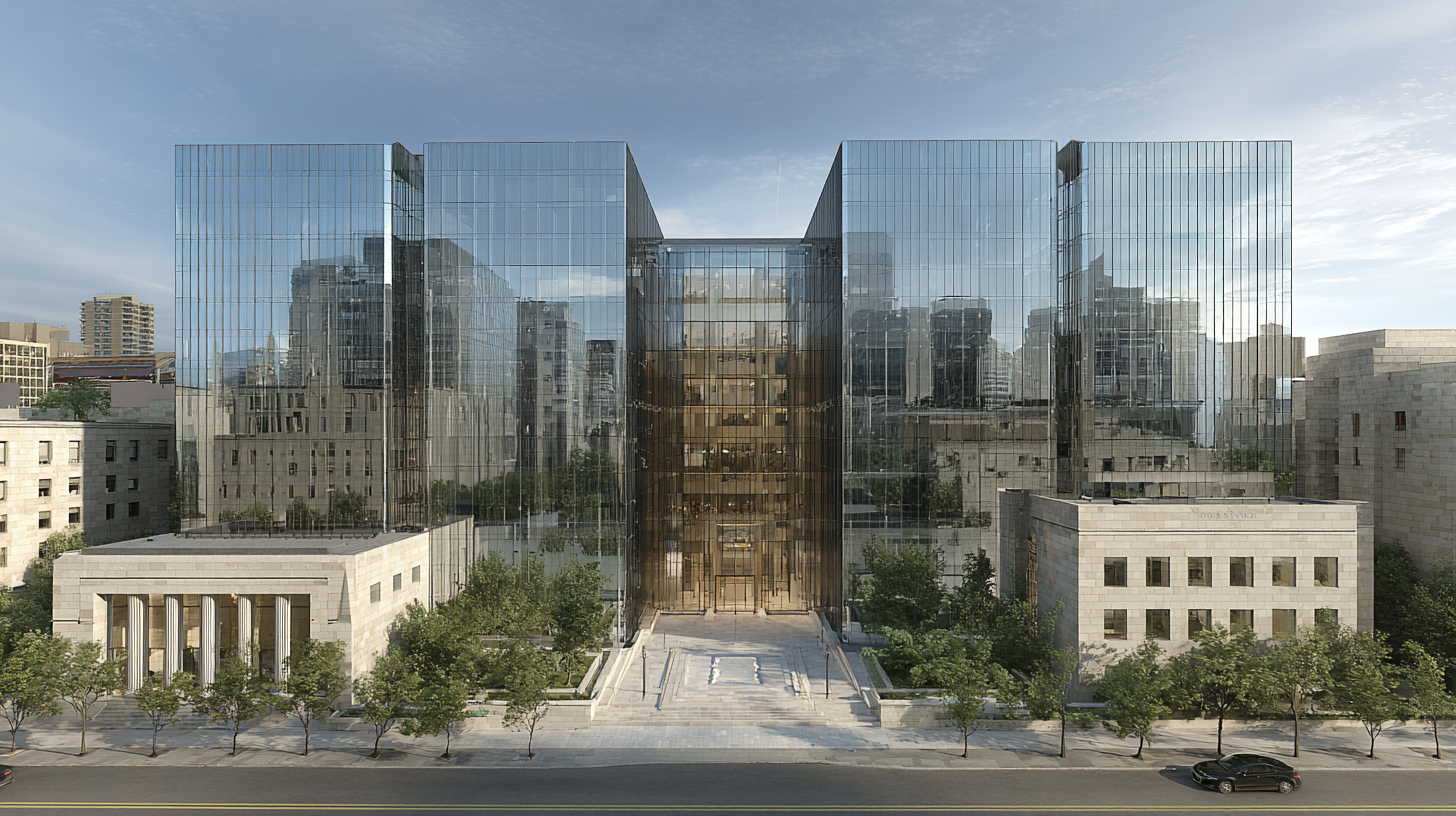
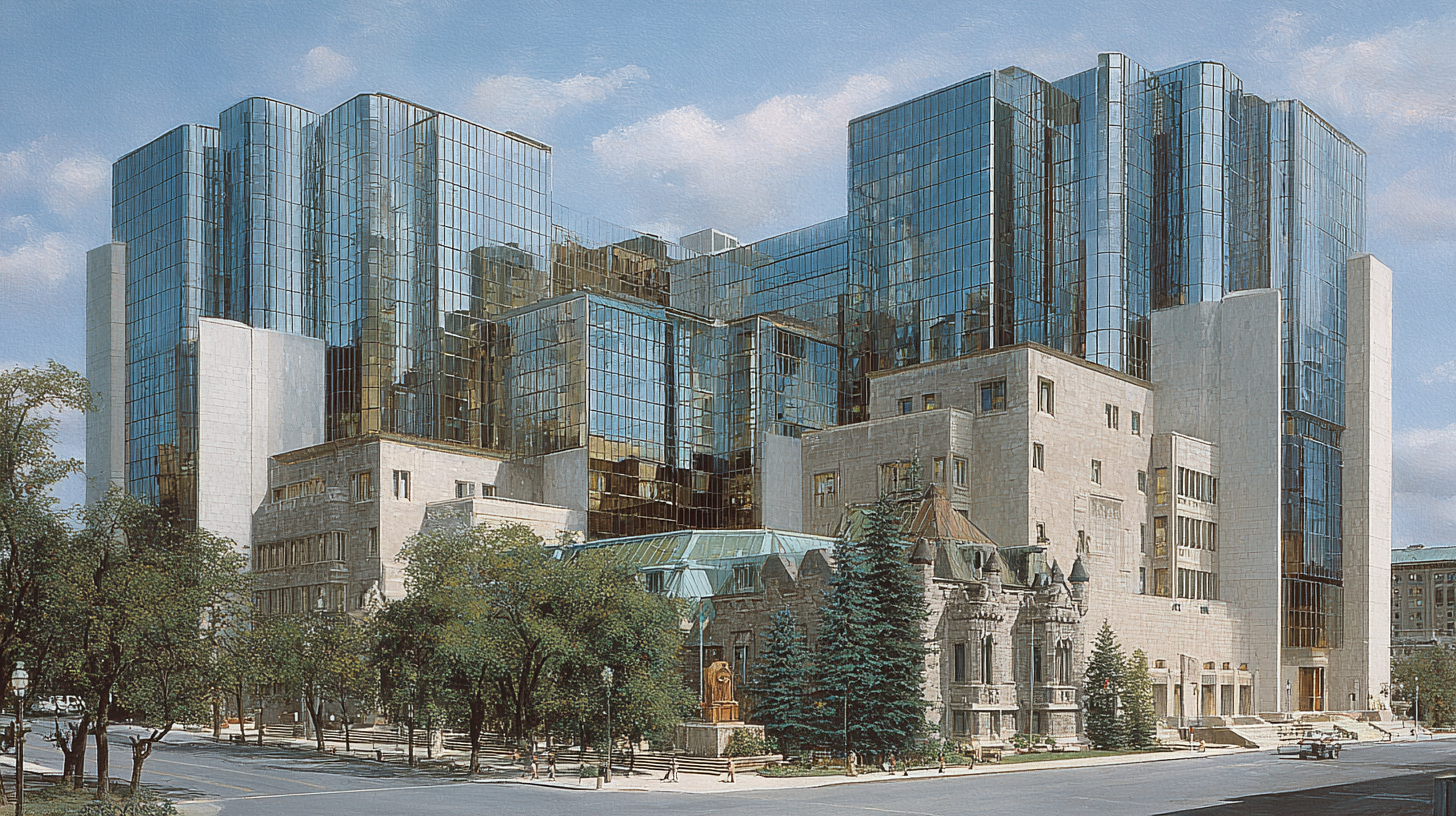
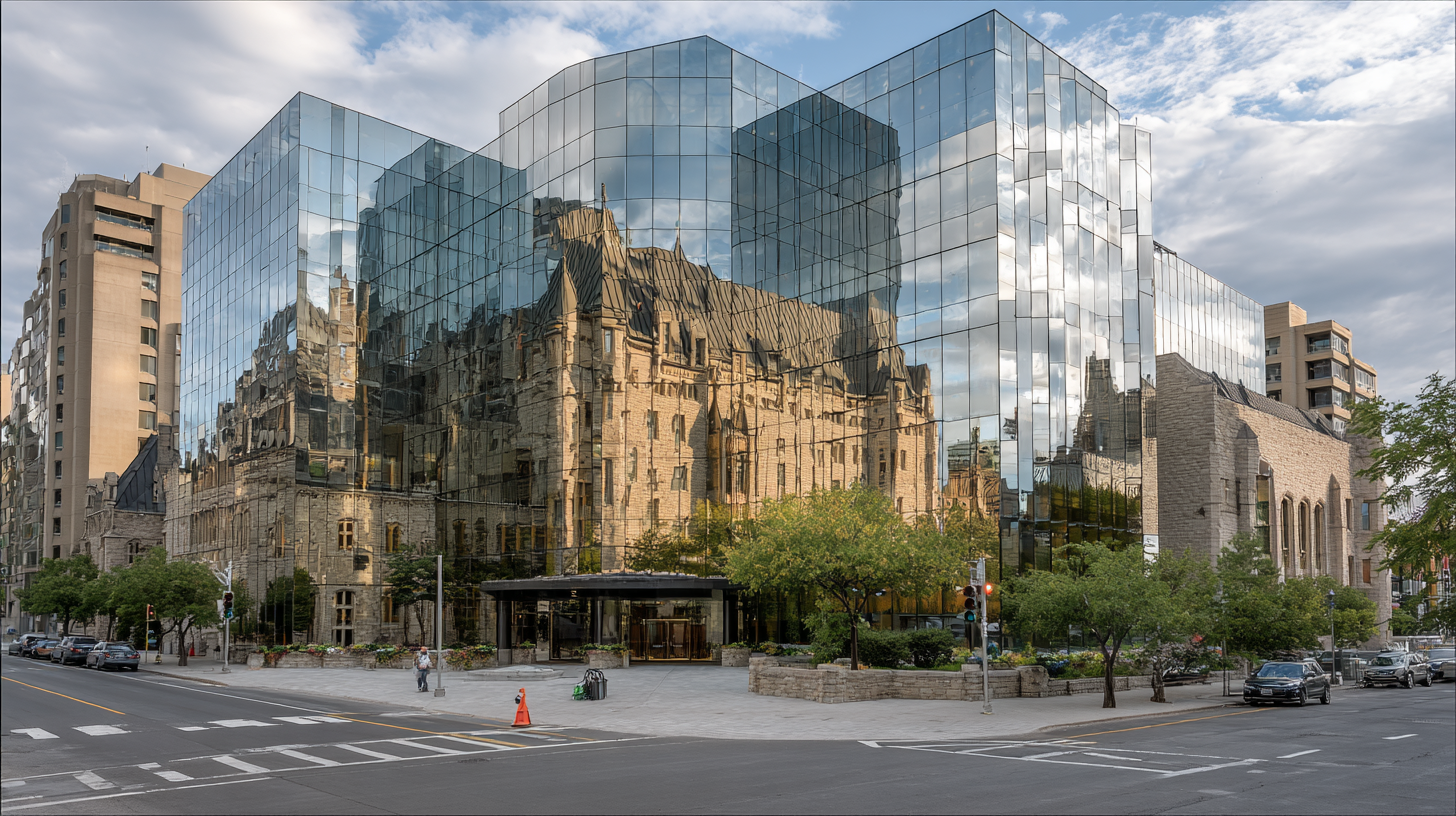
🏡 The Arthur Erickson Foundation
After decades of transforming how Canada saw space, light, and the land beneath its feet, Arthur Erickson’s values now live on through the Arthur Erickson Foundation.
This is not simply an archive. It is a living institution. It preserves his Vancouver home and garden, a modernist retreat tucked quietly into a residential neighborhood. The house is modest, but the ideas it holds are vast. Concrete, wood, and glass come together in ways that blur walls and dissolve thresholds. Just like the man who designed it, the home resists definition and invites discovery.
The foundation curates this space and opens it to the public. It hosts lectures, guided tours, and educational events that carry forward Erickson’s belief that architecture should serve both the spirit and the setting.
Students come to learn. Architects come to listen. Visitors come to feel the silence that shaped his work.
This is not a museum. It is a continuation of a conversation.
It is a space of mentorship, much like the ones Erickson once offered so generously in life. A space where form still follows feeling. Where light still leads.
It is one of the rare places in the world where you can stand inside a legacy and still feel like you are part of something unfinished.
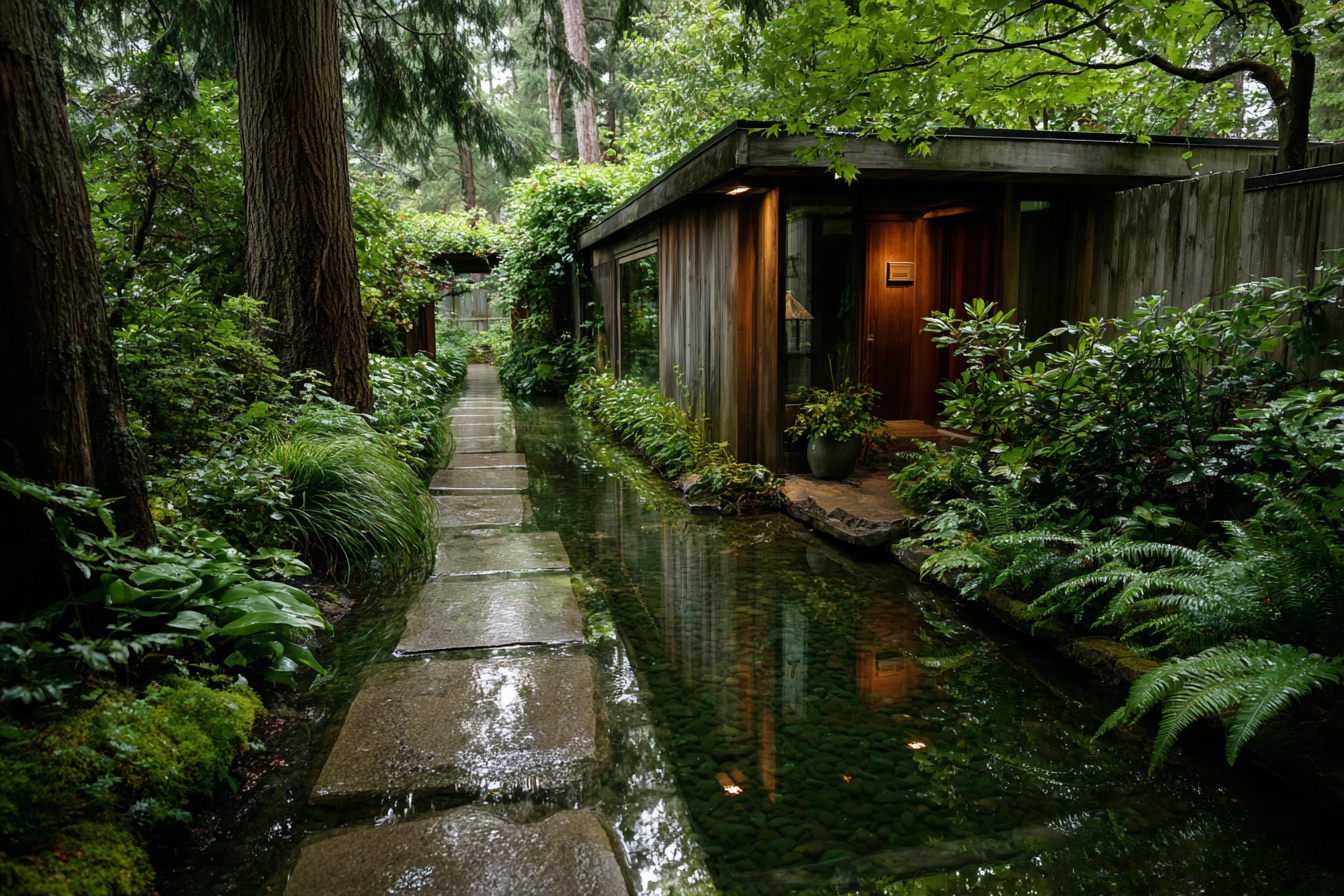
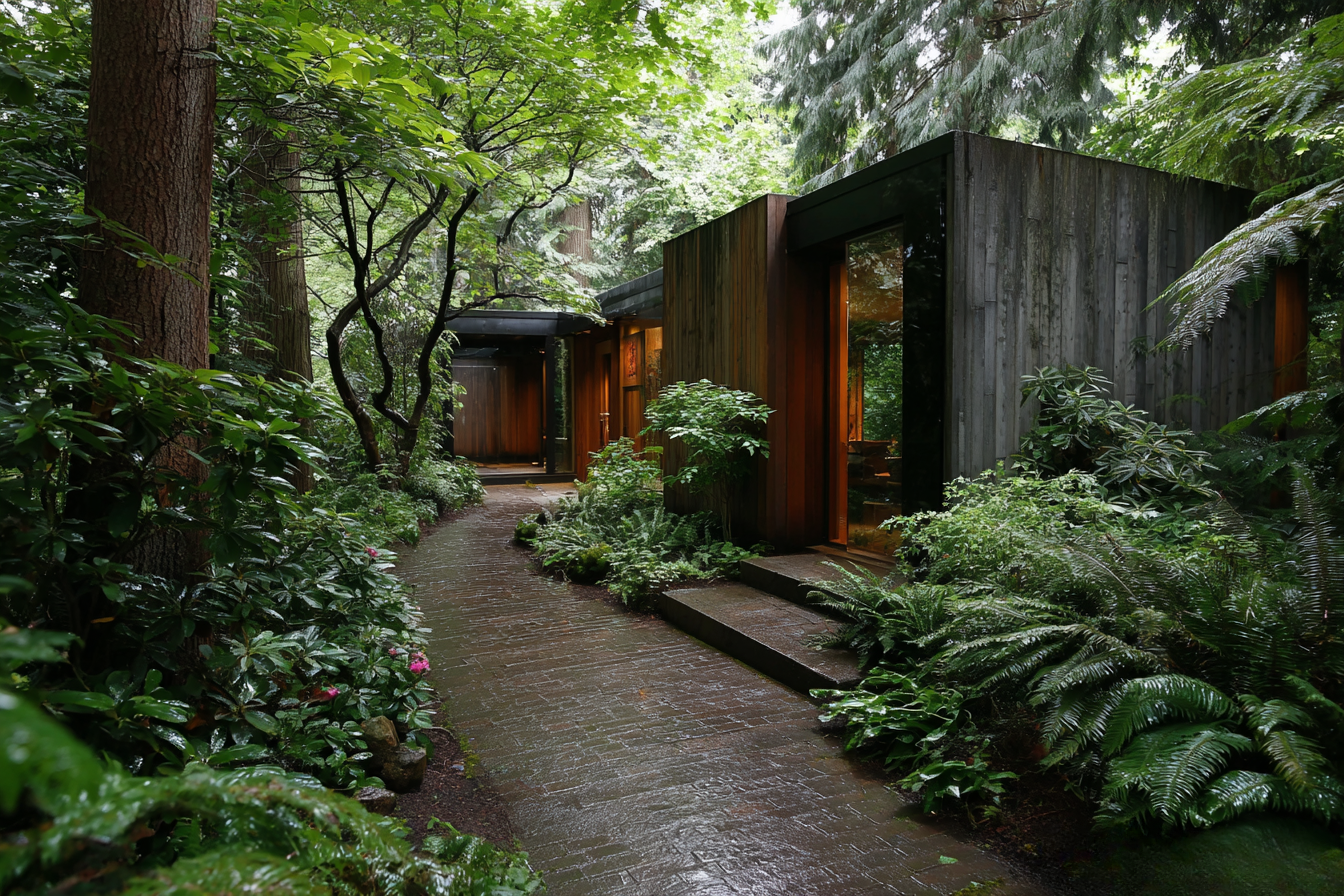
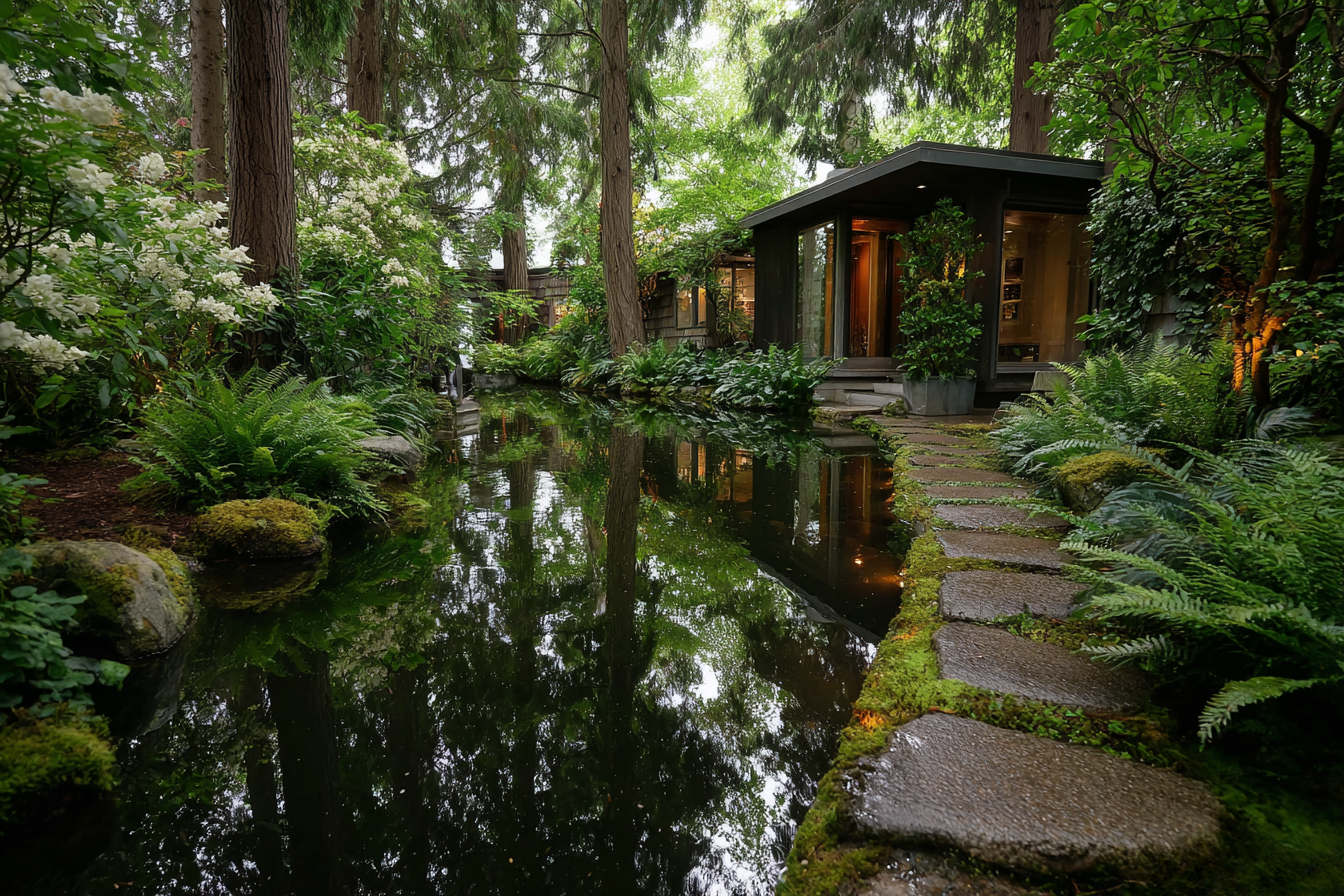
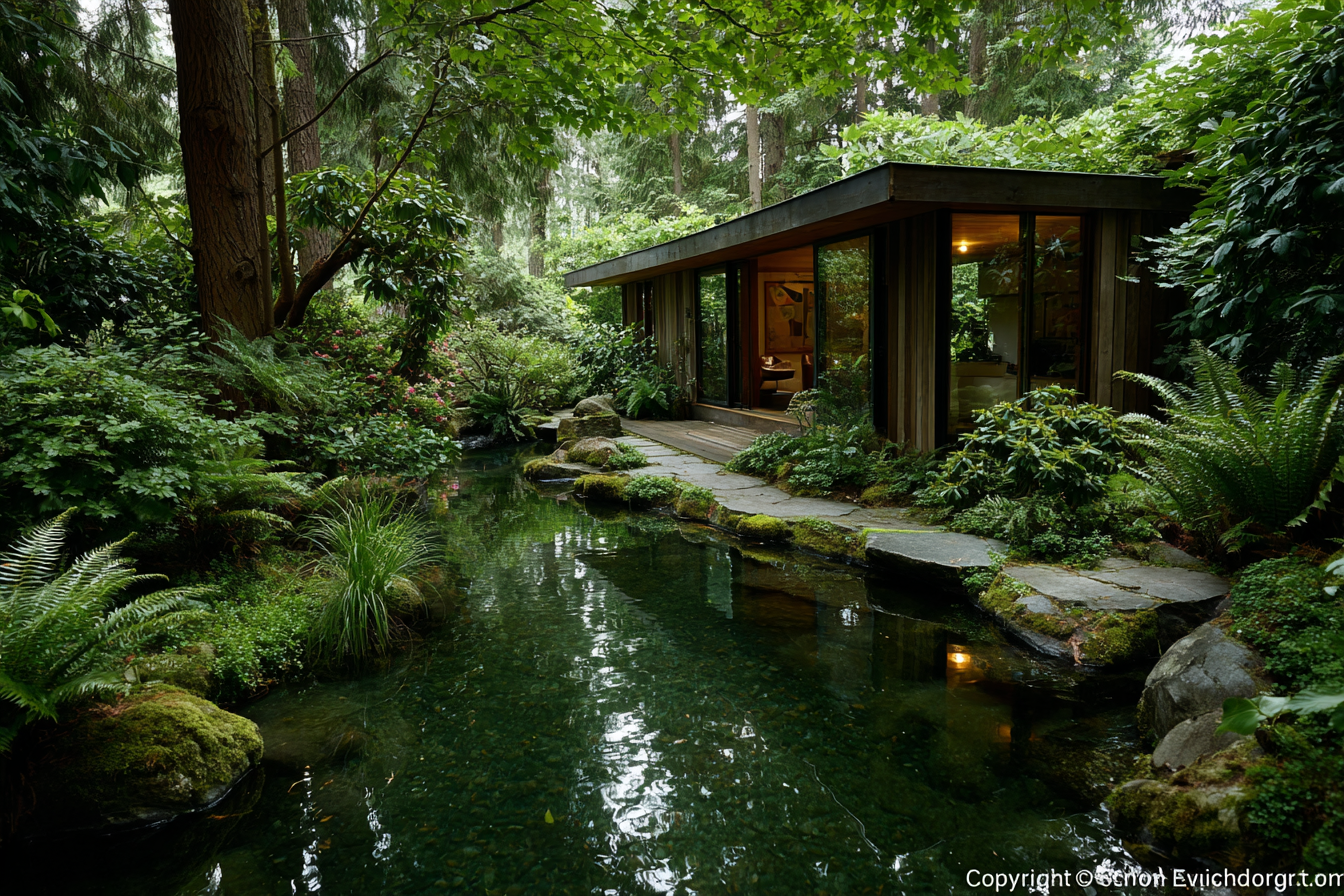
🏅 Gold Medal from the American Institute of Architects
In 1986, Arthur Erickson received the AIA Gold Medal, the most prestigious honor in the field of architecture. With that, he became the first Canadian to receive the award.
It was a quiet milestone in a career full of quiet milestones.
This recognition placed him among the greats. Frank Lloyd Wright. Le Corbusier. Louis Kahn. And now Erickson, a man whose concrete whispered, whose courtyards paused, whose forms listened to the forest.
But to those who knew his work, the award meant something even deeper.
It affirmed that architecture shaped by humility, rooted in nature, and guided by stillness could still be honored in a world that often rewards spectacle.
The AIA Gold Medal was not just for his buildings. It was for his voice. A voice that refused to shout. A voice that believed architecture could be a form of respect.
It told the world that design can be both modern and human. That innovation does not need to overwhelm. That silence can be structure. That beauty can come from balance.
For Erickson, this was never about fame. It was about form that could breathe. Space that could hold light. Ideas that could serve place.
That medal was not the end. It was acknowledgment. Of a lifetime spent listening. To water. To wind. To the wisdom of the land.
🌧️ Struggles Behind the Vision
Arthur Erickson’s story is not just one of buildings. It is also one of persistence. One of grace under pressure. One of brilliance complicated by burden.
As his reputation soared, so did the scope of his studio. His firm became one of the most prolific in Canada. Major commissions arrived regularly. Expectations climbed. Deadlines shortened.
And with that came stress.
By the early 1980s, financial problems began to emerge. Despite his artistic clarity, the firm struggled with management challenges and cost overruns. Clients grew frustrated. Lawsuits followed. In time, Erickson was forced to declare bankruptcy.
Many thought that would be the end.
But Erickson kept going.
The ideas did not stop. The architecture kept evolving. His buildings, his drawings, his teachings—they all continued to flow. His commitment never wavered. His belief in architecture as a force for beauty, healing, and depth held strong.
He turned inward in his later years. The large commissions slowed. He focused more on mentoring, writing, and small, meaningful projects.
His personal life remained private. Some called him mysterious. Others saw him as fiercely loyal. What he offered to the world was not confession, but presence.
What he gave instead was space.
Space to breathe.
Space to reflect.
Space to feel.
Those close to him spoke of his generosity and intensity. He mentored younger architects not with blueprints, but with questions. He encouraged them to visit the site. To walk the land. To study the light. To understand the wind.
He believed architecture had to be lived before it could be drawn.
Despite the financial collapse, his stature as a master only grew. When he received the AIA Gold Medal, it was more than an award. It was an acknowledgment of a life devoted to meaningful design.
His setbacks did not diminish his greatness. They revealed his humanity.
Erickson never built from ego. He built from experience. His philosophy was not something taught. It was something earned through years of listening, failing, trying again.
To this day, people step into his buildings and do not just admire the structure.
They feel stillness.
They feel awe.
They feel connection.
That is the true legacy of Arthur Erickson. Not just a collection of concrete and glass. But a life of persistence, passion, and purpose.
A legacy shaped not just by success, but by struggle.
Not just by recognition, but by resilience.
Not just by what he built, but how he lived.
🧠 Reimagining Erickson with Midjourney AI
What happens when architecture rooted in stillness meets technology born from speed? When a philosophy built from concrete, cedar, and shadow is reinterpreted through a neural network? These are the questions we ask as we explore the life and vision of Arthur Erickson through the evolving lens of Midjourney AI.
We are no longer bound by the drafting board or the studio alone. With generative AI, we can prompt a machine to imagine. We can translate the quiet geometry of an Erickson design into a digital vision that respects his values and reinterprets his forms. What emerges is not replacement. It is reflection.
Midjourney allows us to render spaces that echo his voice. It lets us visualize alternate futures of his architecture. Courtyards that never got built. Projects that remained on paper. Proposals that only lived in sketches. We now breathe new life into them using texture, lighting, composition, and spatial memory.
We are not here to modernize Erickson. We are here to see what his vision might have become if he had a prompt at his fingertips. If he could describe mood instead of material. If he could evoke atmosphere through imagery instead of only drawings.
This is not just architectural rendering. It is architectural reimagining.
And it begins with a prompt.
🎯 Why Use Midjourney for Architecture?
Architecture has always balanced between vision and construction. Between what we imagine and what we can build. For decades, that bridge was paper. Drafts. Models. Renders done by hand. Now, a new bridge has emerged. One built by pixels and language.
Midjourney, a leading generative AI tool, offers something powerful to architects, designers, and storytellers. It allows us to create visual interpretations of architectural ideas from a single line of text. This is not science fiction. It is now part of the design process.
With each prompt, you explore space before it exists. You test form before pouring concrete. You shift light before raising steel. The creative cycle becomes faster and more open-ended. Imagination is no longer held back by materials or budget. It flows through iterations of color, shape, rhythm, and shadow.
When applied to Arthur Erickson’s body of work, the opportunity becomes something more than practical. It becomes poetic.
You can study how light spills across brutalist surfaces at dawn. You can experiment with cedar, water, and glass in ways that echo his principles. You can reimagine his philosophy in forests he never walked, or cities he never designed for. Each Midjourney image becomes a conversation. Between past and future. Between the known and the not-yet-built.
The AI does not replace the architect. It becomes a collaborator. A kind of mirror that reflects design intent in surprising forms. With careful prompt crafting, you begin to understand what Erickson valued most. Restraint. Landscape. Emotion. Clarity.
In this way, Midjourney becomes more than a tool. It becomes a method of architectural empathy.
And in the hands of someone who listens, it can still honor the voice of a master.
🖌️ Sample Prompt Styles
Midjourney is not just a rendering tool. It is a design dialogue. Each prompt is a kind of conversation with possibility. The way you frame a prompt affects everything. The color of the light. The angle of the building. The texture of the walls. The spirit of the space.
To reimagine Arthur Erickson’s work through Midjourney, we must write prompts that reflect the dualities in his designs. Solidity and softness. Precision and poetry. Nature and geometry. Each stylistic approach brings out a different side of his vision.
Below are three foundational styles to explore: painting, sketch, and photoreal. Each one offers a lens into his architectural DNA.
🎨 Painting Style
Use this approach when you want mood to speak louder than measurement. Painting prompts in Midjourney prioritize color, atmosphere, and artistic feeling over detail and scale. Think of it as a dream of architecture rather than a blueprint.
Example Prompt:
Oil painting inspired by Arthur Erickson architecture. Terraces cascading over a hillside. Glass reflecting the warm colors of sunset. Surrounded by Pacific evergreens. Impressionist brush textures. Soft focus. Mood over detail.
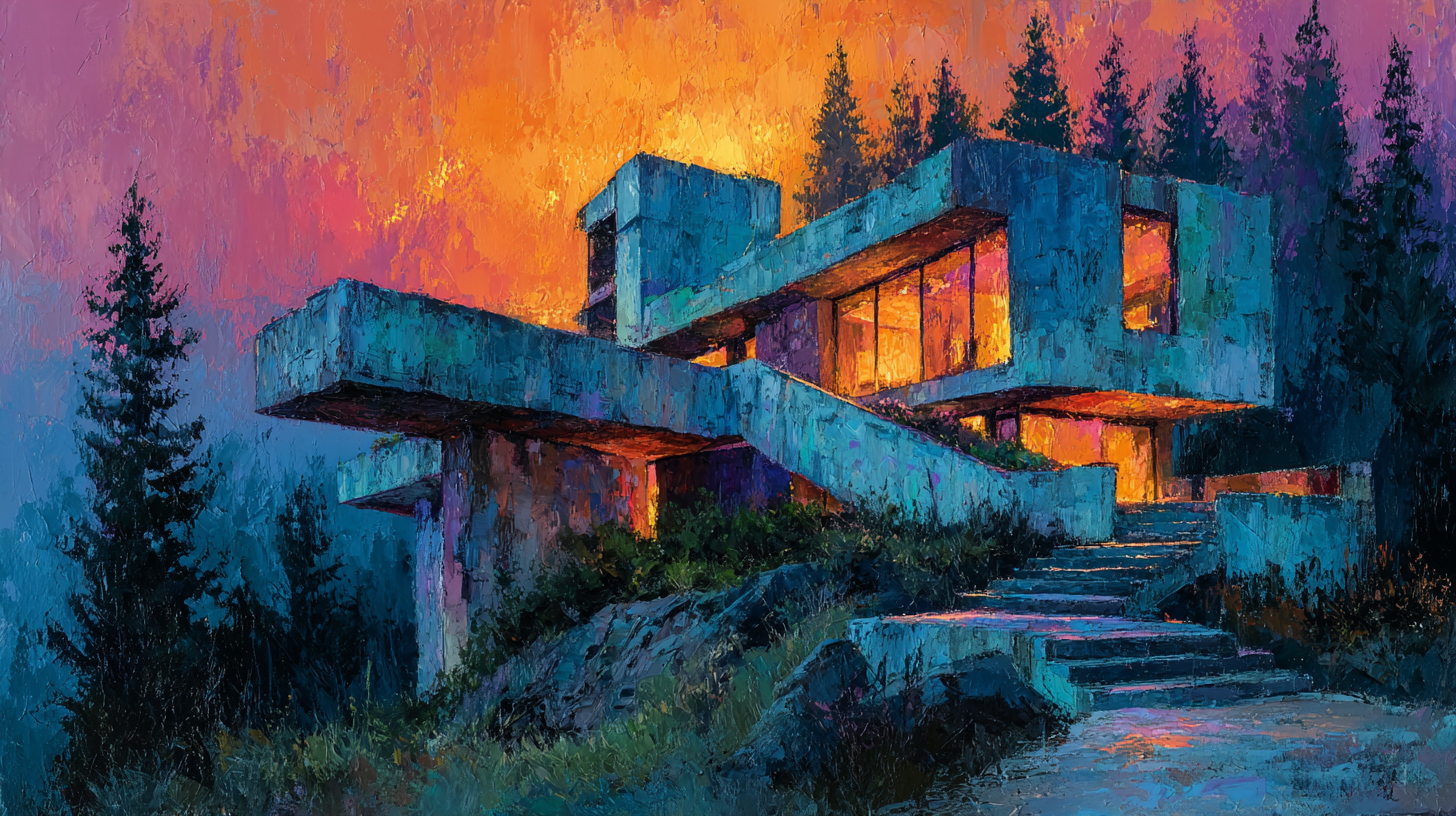
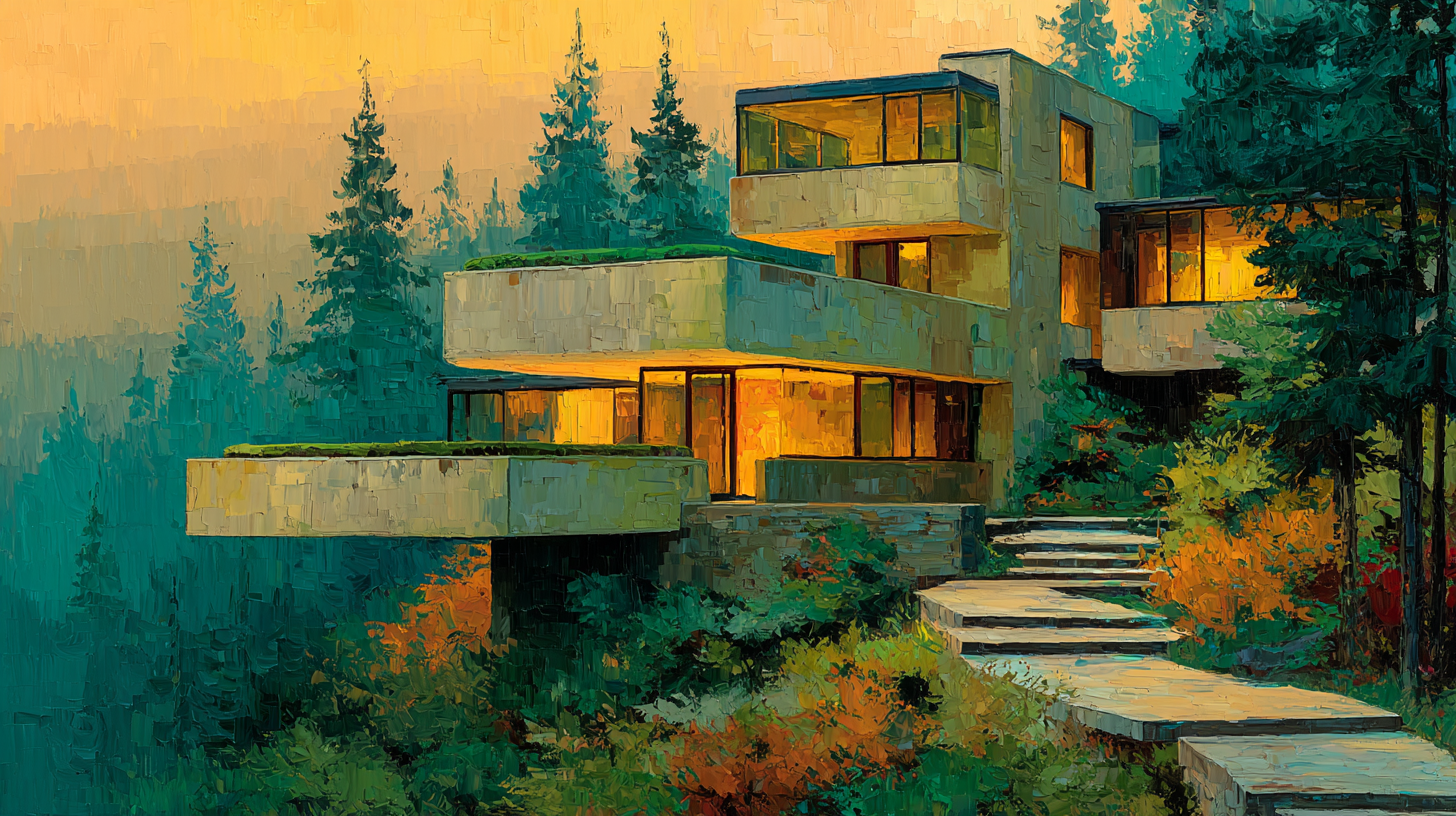
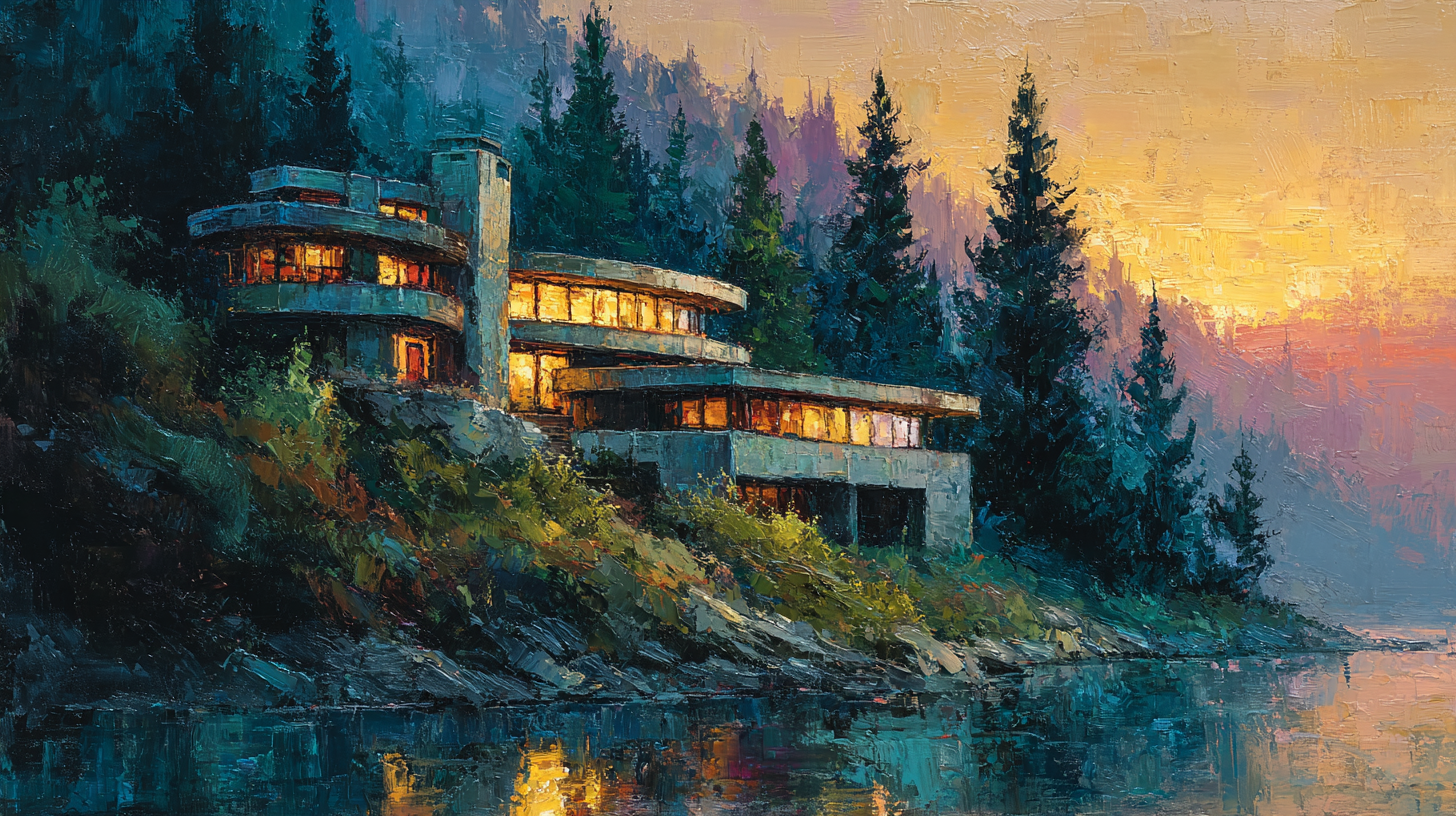
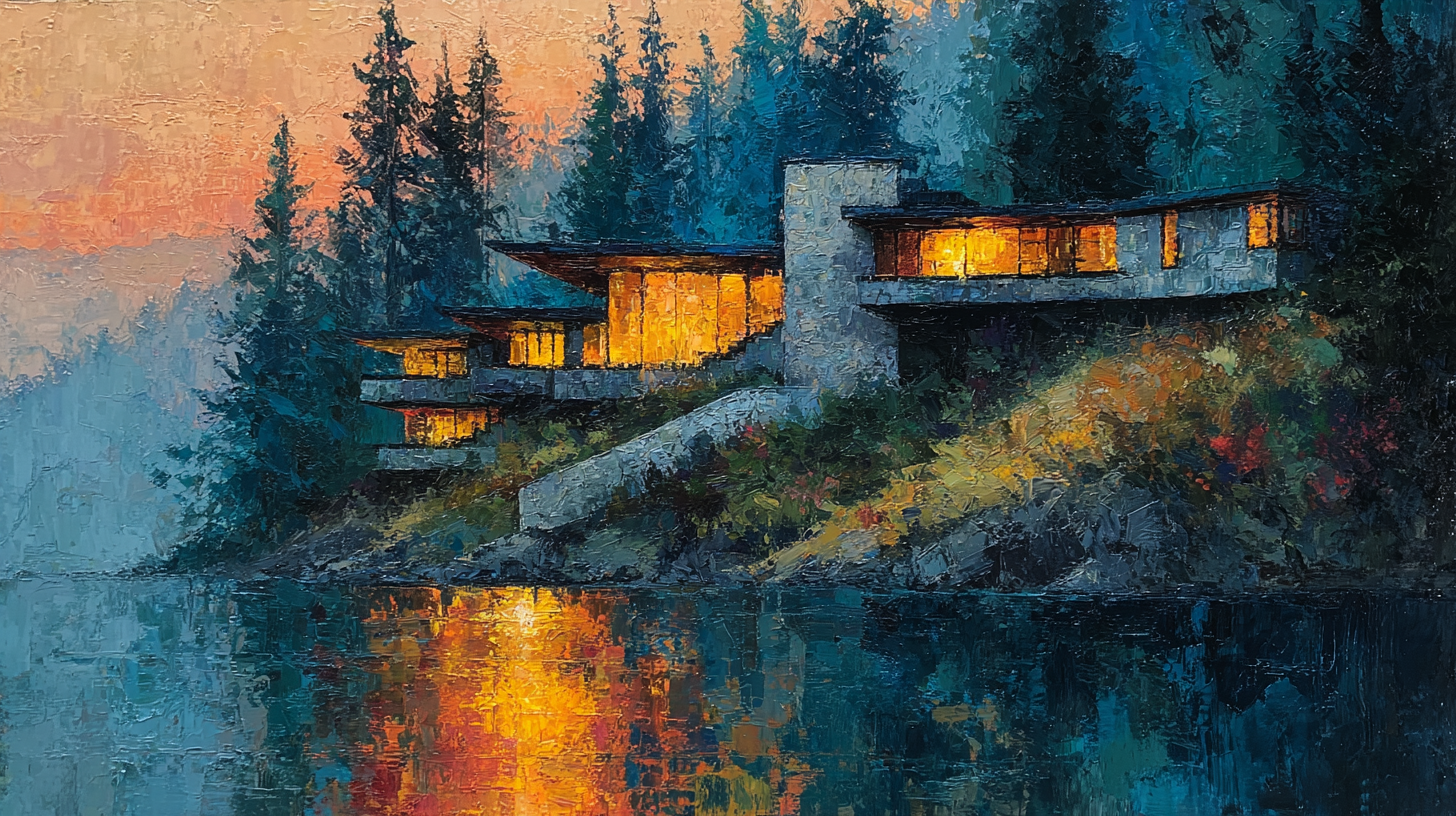
This type of output helps explore emotional resonance. It captures the tone and spirit of a space before lines are drawn. It is useful for early design inspiration and storytelling visuals.
✏️ Sketch Style
Sketch prompts return to the origin of all architectural ideas. The hand-drawn line. These prompts can simulate pencil, charcoal, or ink. They focus on form, proportion, and the early idea phase before materials are decided.
Example Prompt:
Pencil sketch of modernist house in Arthur Erickson style. Wood and concrete framed by dense forest. Long horizontal roofline. Hand-rendered sketch texture. Monochrome palette. Light shading on columns and overhangs. Angled perspective, 45 degrees.
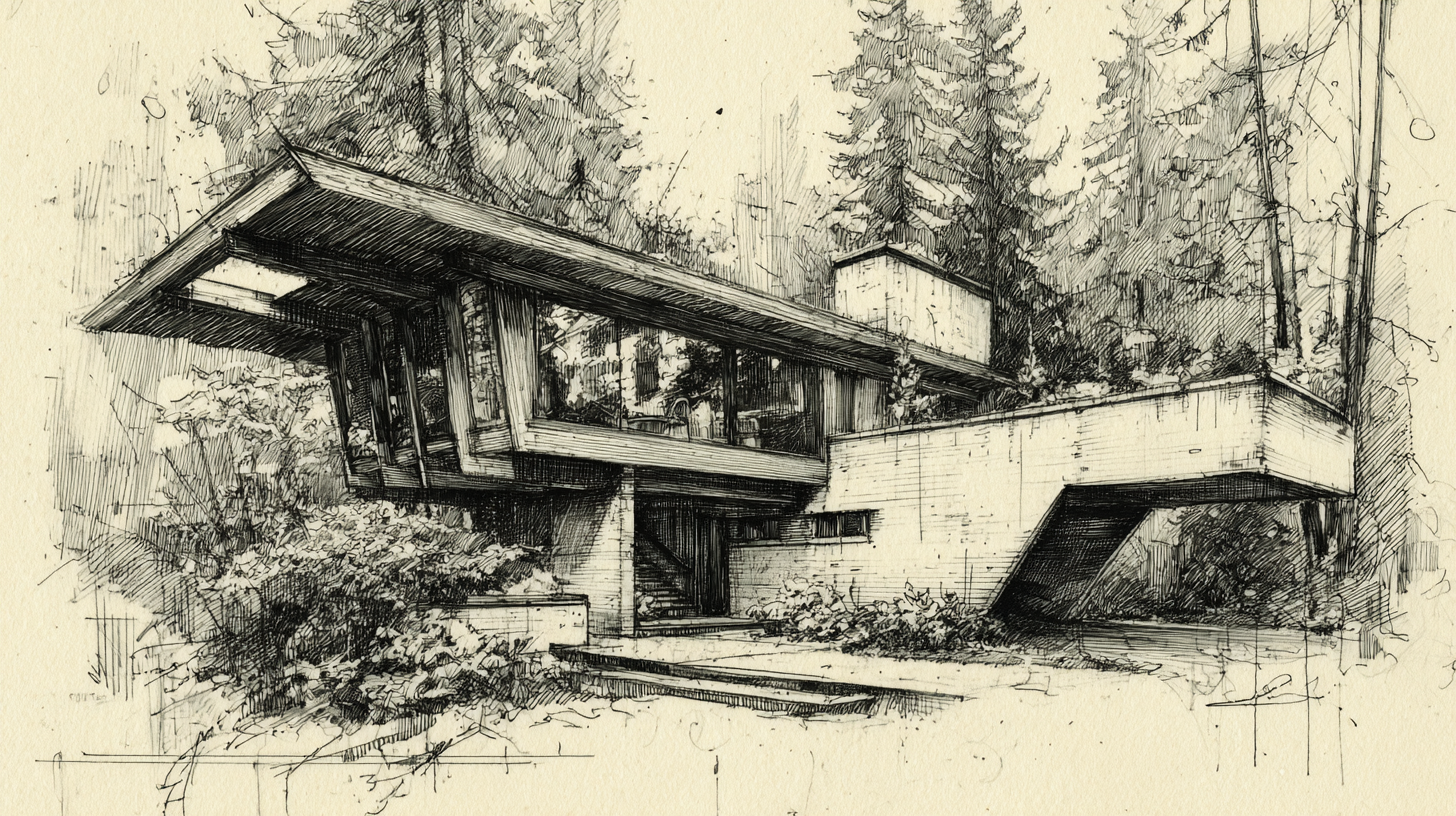
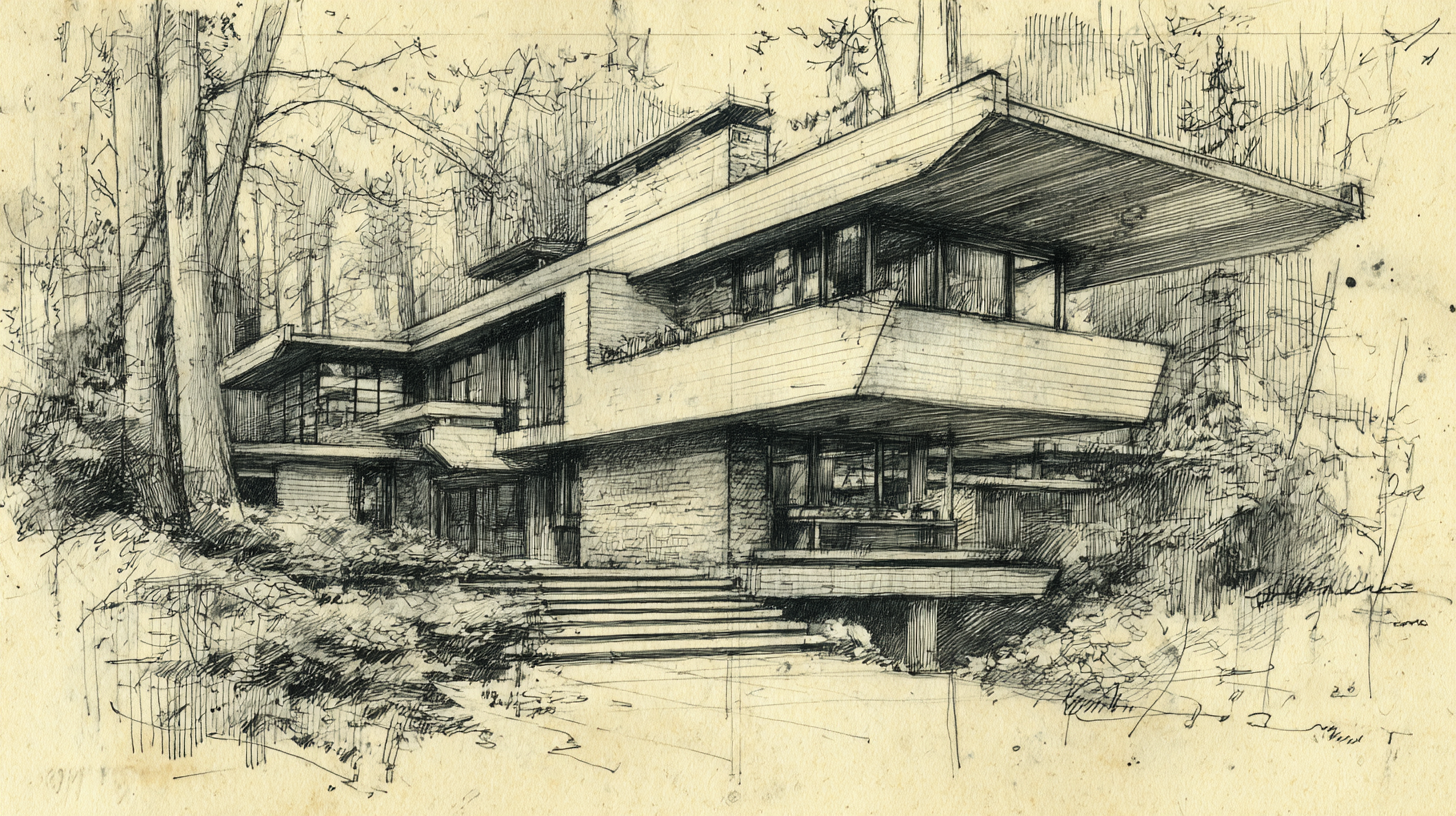
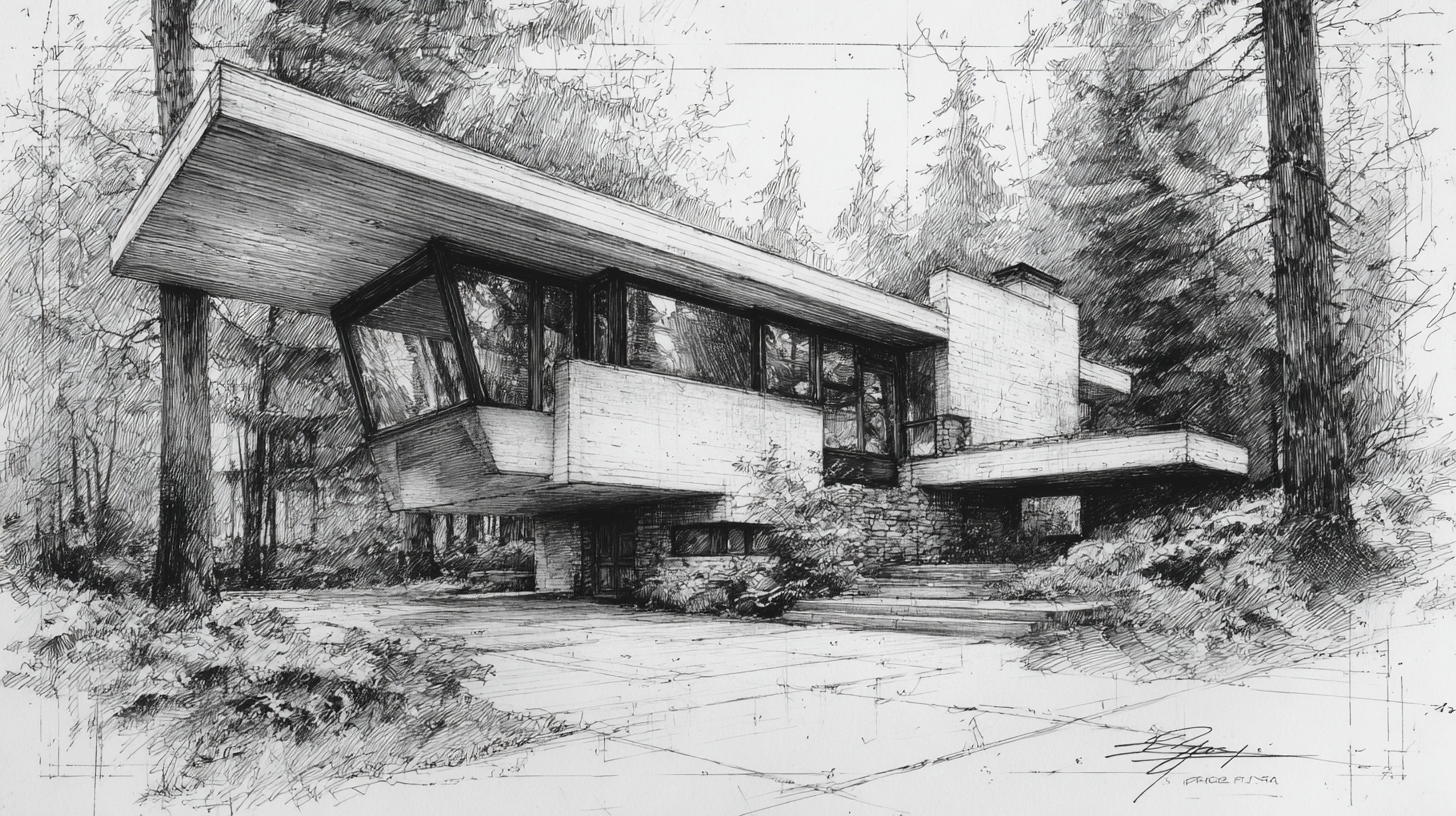
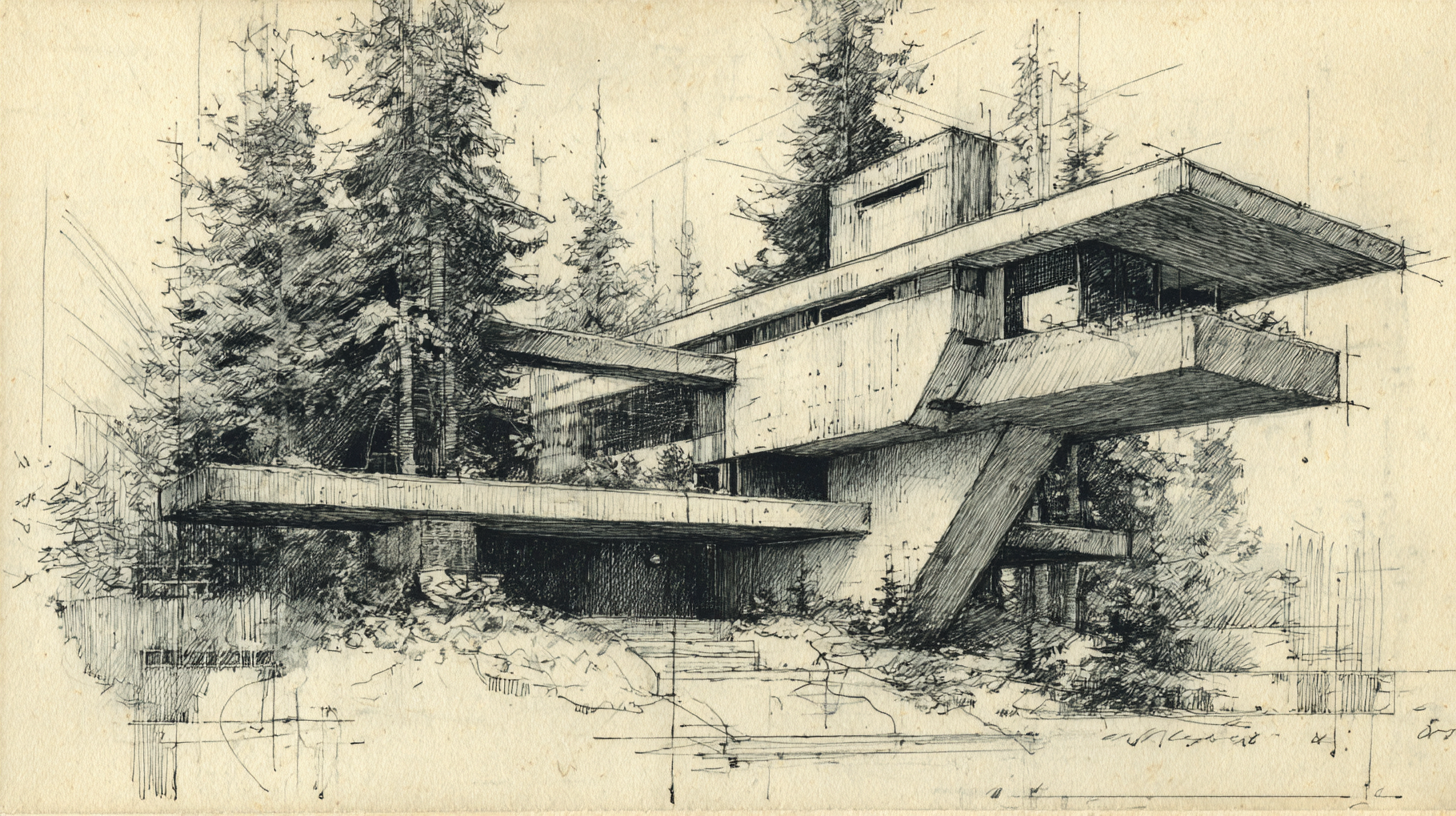
This style is perfect for capturing the raw simplicity of design before complexity sets in. It honors the way Erickson worked. Quietly. Intuitively. Always in relationship with the land.
📷 Photorealistic Render
Photorealism in Midjourney offers a more grounded and technical visualization. These prompts simulate architectural photography. Lighting, camera settings, and material textures play key roles here.
Example Prompt:
Modernist building inspired by Arthur Erickson. Cedar and raw concrete. Terraced levels opening onto water. Surrounded by forest. Shot at golden hour using Nikon Z7 II. 35mm prime lens. Aperture f/4. ISO 100. Still water reflections. Ultra-realistic textures.
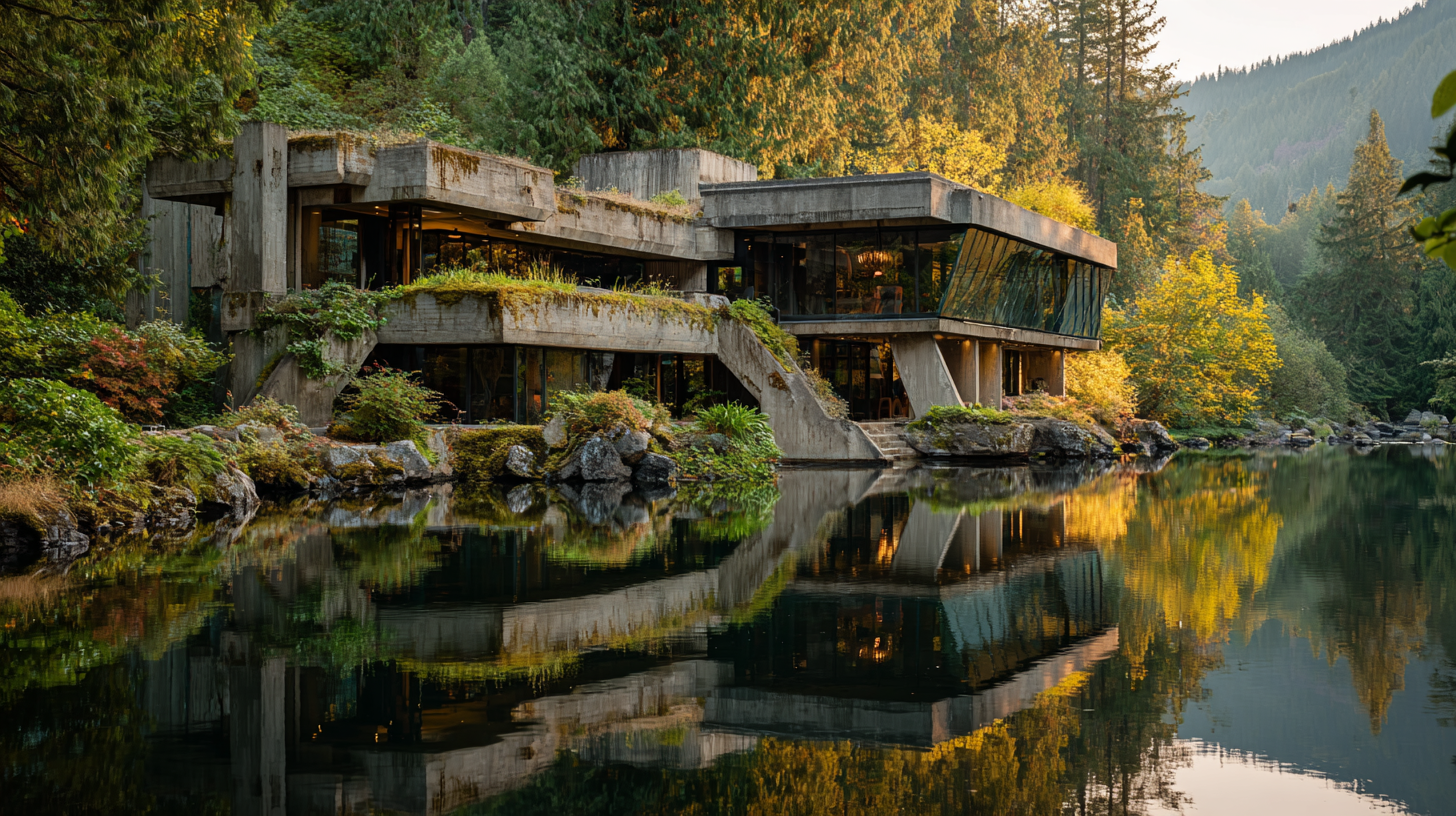
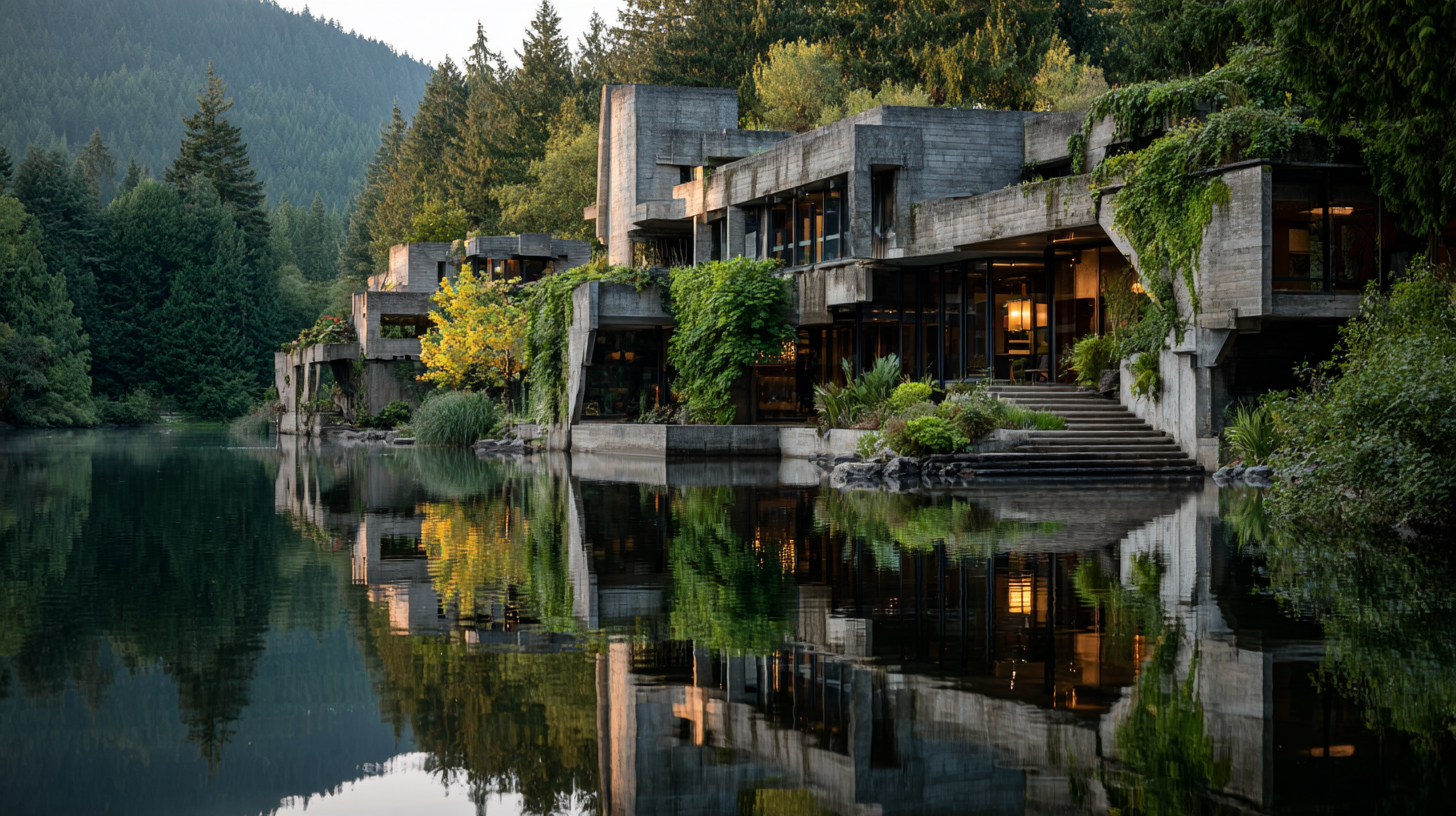
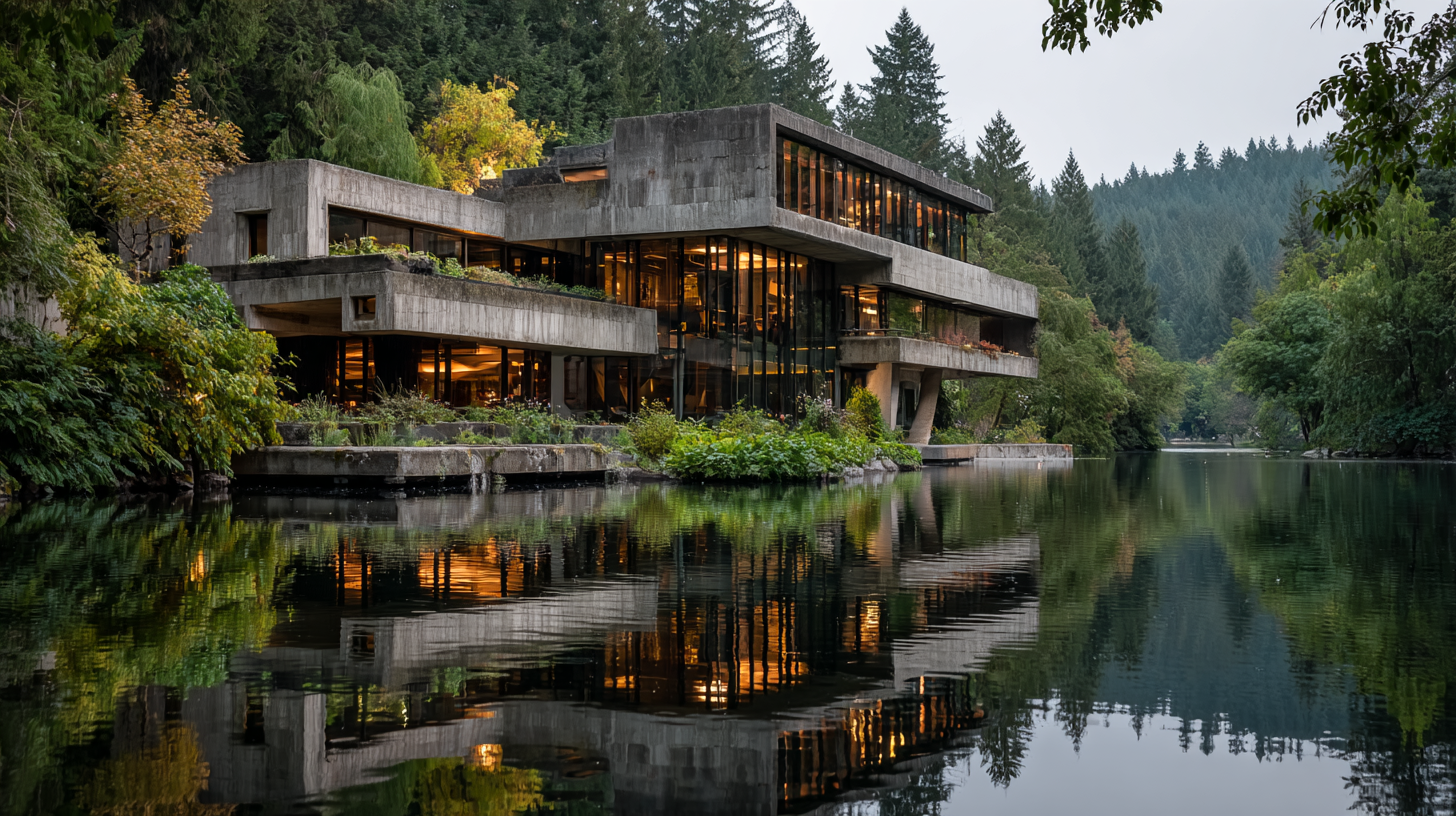
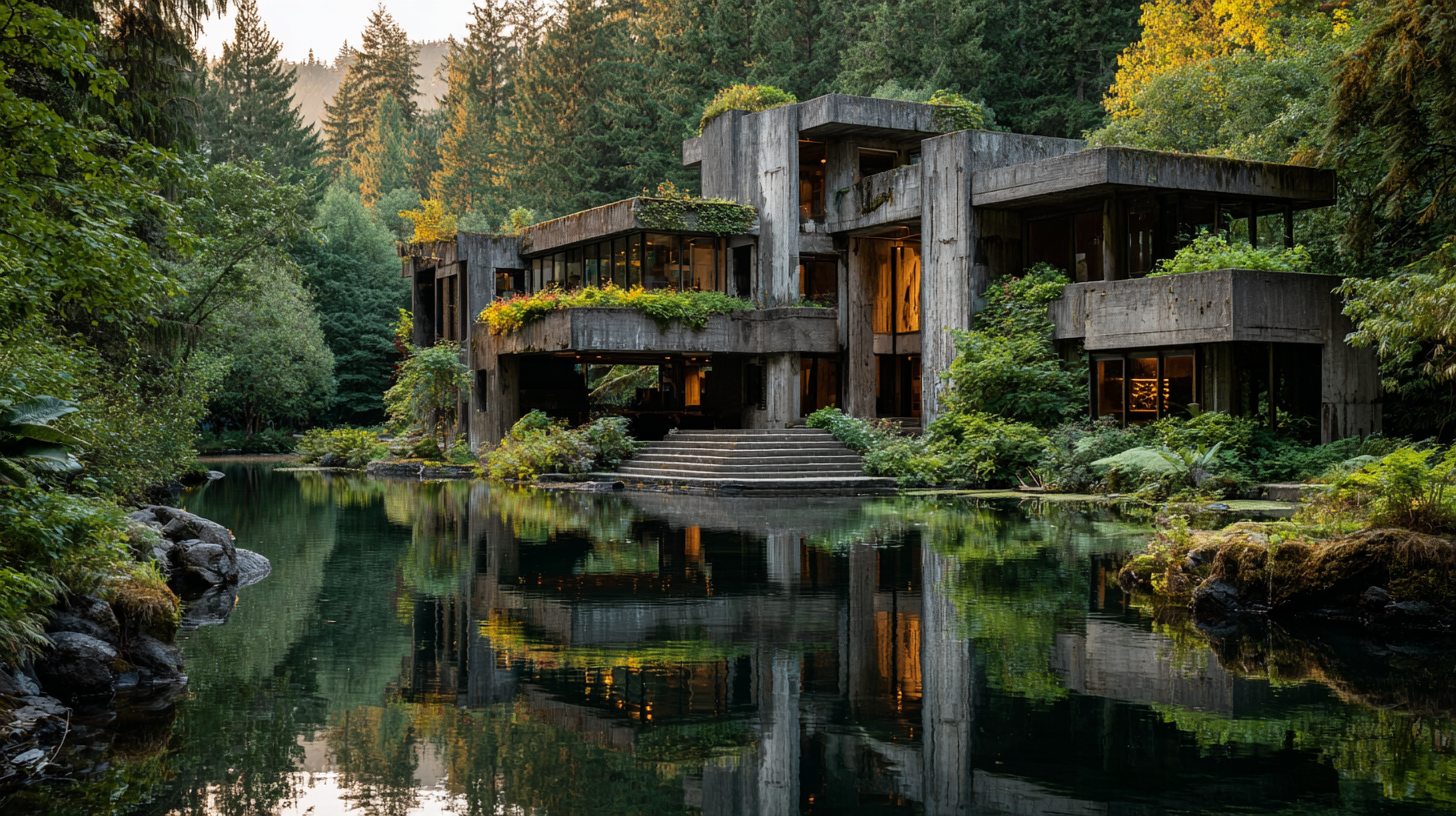
This prompt format is ideal for showcasing how a concept would feel if built today. It is practical for client presentations, portfolio visuals, or design development with a focus on realism.
By exploring these three styles such as painting sketch and photoreal you move through the same spectrum that Erickson embraced. From idea to image. From feeling to form.
Each visual output becomes more than a render. It becomes a tribute. It becomes a way to listen again. To listen to an architect who always designed with both restraint and reverence.
📸 Camera Settings, Lens, and Lighting for Photoreal Renders
When crafting photorealistic architectural renders in Midjourney, detail matters. The atmosphere of an Arthur Erickson space is not just about shape or structure. It is about how light lands on concrete. How shadows stretch across water. How reflections move with the sky.
To recreate this in digital form, your prompt must act like a camera. Every word is a setting. Every phrase affects depth, clarity, and tone. Think like a photographer walking through an Erickson building at sunrise. Think of how the stillness feels. Then translate that into your technical input.
Below is a guide to camera specifications that align with the visual logic of Erickson’s work.
🏞️ Camera Body
Use a mirrorless full-frame camera in your prompt. This helps Midjourney simulate high-resolution clarity and real-world sharpness. Examples include:
- Nikon Z7 II
- Canon EOS R5
- Sony A7R IV
Mentioning these specific models increases render quality and narrows stylistic output to pro-level imagery. These bodies are known for their dynamic range, which suits Erickson’s subtle play between shadow and surface.
🔍 Lens Choice
Erickson designed with horizontals in mind. The best lens to emphasize this is either a 35mm or 50mm prime. These mimic the human eye’s natural field of view and provide architectural authenticity.
If you want to capture a broader, more monumental feel, for example, Simon Fraser University or the Museum of Anthropology, try a 24mm wide-angle lens. This stretches the horizon and exaggerates perspective. It is ideal for terraces, plazas, and long concrete spines.
🌤️ Aperture Settings
To achieve depth without losing focus on architectural elements, set the aperture between f/4 and f/5.6. This range keeps most of the frame in focus while allowing a gentle falloff in the background. It mimics how we experience buildings in real life. Focused on one surface while remaining aware of the environment around it.
🌫️ ISO and Texture Clarity
Keep ISO low, around 100 or 200. This maintains clean textures and sharpness in material surfaces. Erickson’s buildings demand detail. You want to see the roughness of poured concrete. The warmth of cedar. The shimmer on still water. A high ISO introduces digital noise, which breaks that realism.
⏱️ Shutter Speed
Shutter speed varies based on light, but for golden hour shots, when Erickson’s spaces look their most cinematic, a speed between 1/60 and 1/125 seconds captures motion and atmosphere without blur. Faster speeds freeze the moment. Slower speeds invite mood.
🔦 Lighting Conditions
Light in Erickson’s architecture is a character. It shifts. It rests on walls. It moves across stone like breath.
The best times to simulate this are:
- Early morning light: soft, cool tones, long shadows
- Golden hour: rich warmth, deep contrast, emotional resonance
- Overcast skies: diffuse light, minimal glare, meditative feel
Specify lighting in your prompt. Say “early morning light” or “golden hour shadows on water.” Midjourney will interpret these cues and create more authentic compositions.
📐 Angle and Framing
Position your virtual camera slightly below eye level. This emphasizes Erickson’s horizontal lines and terraced layers. Mention this directly in your prompt:
- “low angle view”
- “horizontal composition”
- “eye-level perspective showing terraces against sky”
Frame the building to include nature. Always. Erickson never saw a structure in isolation. If possible, include forest, water, sky, or garden. Let the architecture breathe with its setting.
🧱 Material Texture in Focus
Use these phrases in your prompt to direct how materials should appear:
- “textured concrete wall with visible grain”
- “polished cedar cladding reflecting soft light”
- “glass panels mirroring trees and sky”
- “still water pool with gentle ripples”
These create the tactile experience that defined Erickson’s work. The render is not just about looking. It is about feeling the weight of the materials. It is about seeing silence.
🧠 Prompt Example – Putting It All Together
Writing an effective Midjourney prompt is an act of clarity. It is less about commanding the AI and more about inviting a specific kind of atmosphere. Arthur Erickson’s architecture requires more than materials and angles. It asks for stillness, reflection, and restraint.
Here is one prompt you can use as a model:
Modernist terrace building inspired by Arthur Erickson. Horizontal concrete layers open onto forest and water. Golden hour lighting. Shot with Nikon Z7 II and 35mm lens. Aperture f/4. ISO 100. Low angle perspective. Ultra-detailed concrete texture. Glass reflecting trees. Still pond in foreground. Natural color palette. Calm and immersive mood.
This prompt includes spatial context, lighting direction, camera specifications, emotional tone, and material presence. It sets the stage for a render that captures the soul of Erickson’s vision. You are not just creating a picture. You are creating a pause. A quiet moment of architectural storytelling.
🎨 Blend of Styles – Photoreal to Sketch to Painting
Arthur Erickson’s work defies single definition. That is why we must reimagine it through multiple visual lenses. When used intentionally, Midjourney allows us to generate different stylistic avatars of the same design idea. Each one speaks in its own voice.
Photorealism is where material becomes memory. It shows what a building might look like if built today. It is ideal for showcasing surface detail, lighting direction, and technical realism. Camera settings help evoke the atmosphere. For instance, a forest-framed terrace or a golden hour reflection pool.
Sketches offer the raw essence of form. Pencil lines on digital paper. This is how Erickson often began. With intuition instead of precision. A sketch reveals proportion, rhythm, and structure before materials are chosen. It connects directly to the earliest moments of creative thought.
Paintings are for mood and metaphor. Think of them as spatial poetry. Brush textures replace concrete. Warm tones replace measured lines. A painting prompt conveys what the architecture feels like rather than how it functions. It reveals how light settles, how space breathes, how silence becomes shelter.
By exploring all three modes such as photoreal, sketch, and painting, we begin to understand the full spectrum of Erickson’s philosophy. He was both a sculptor of form and a composer of feeling. And AI, when guided by intention, becomes a canvas to explore both.
🗺️ The Importance of Place
For Arthur Erickson, architecture always began with one thing: the land. Every project was a dialogue between structure and setting. He did not impose his ideas on a site. He listened first. He studied the slope, the wind, the light. He observed how the forest leaned, how water moved, how clouds rolled in.
He often said that a building should never be separate from its context. It should grow from the terrain, not sit on top of it. This is clear in works like Simon Fraser University, where glass and concrete meet the edge of the sky and overlook a sea of trees. The site is not a backdrop. It is a participant.
This relationship with place is vital when generating renders in Midjourney. A well-crafted prompt must include references to geography, light, and natural context. When you mention forest, water, and topography, you invite the AI to build with the land, just as Erickson did.
Architecture without place becomes sculpture. Erickson built something else. He built belonging.
🌞 Material and Light
Arthur Erickson did not choose materials by fashion. He chose them by feeling. By meaning. By how they responded to sun, shade, rain, and reflection.
His material palette was simple: concrete, wood, glass, water. These four elements appear across many of his iconic buildings. Each was chosen for how it interacts with nature. Concrete offered strength. Wood added warmth. Glass brought openness. Water brought stillness.
But none of it mattered without light.
Erickson studied how shadows moved across a terrace. How morning light danced on a pool. How clouds softened brutalist lines. Light was never just brightness. It was structure.
When prompting Midjourney, light is essential. Specify time of day, weather, and shadow behavior. Include terms like soft golden hour, overcast light, or long shadows across water. Let light become part of your prompt the way it was part of Erickson’s design.
This is how we honor him. Not just by recreating form, but by recreating how that form feels in the light.
🚶 Spatial Sequence and Human Experience
Erickson did not simply design buildings. He designed journeys.
A curved path through cedar trees. A sudden opening into sunlight. A moment where water catches your reflection. These were the experiences he cared about.
His architecture is a choreography of space. It flows. It guides. It pauses. You do not just look at his buildings. You move through them. You inhabit them.
Robson Square is a perfect example. It is not a monument. It is a sequence of terraces, walkways, gardens, and courtyards. The materials are simple. But the experience is layered.
When crafting prompts in Midjourney, let the AI know that this is not just a structure. It is a space meant to be used. Include terms of movement such as public steps, walking paths, open courtyards, reflections, ramps, and terraced layers.
Erickson’s architecture lives between places. In thresholds, edges, and openings. It is not static. It is alive.
🌿 Relationship with Nature
Nature was not separate from Erickson’s architecture. It was part of it.
His buildings leaned into forests, opened toward oceans, and echoed the mountains they sat beside. His work did not resist the land. It responded to it. Sometimes it mirrored it. Sometimes it disappeared into it.
He used materials that aged. That weathered. That invited moss and shadow. Concrete was not painted. It was exposed. Glass was not tinted. It was clear.
Nature shaped every part of his process. It framed decisions. It inspired restraint.
This is the relationship we must preserve when using AI.
When prompting Midjourney, let landscape be central. Write words like surrounded by forest, adjacent to water, stepped into hillside, open to sky. Let trees and shadows be part of the structure. Let water reflect not only design, but intent.
You are not just creating architecture. You are creating a conversation between land and form.
That conversation is the foundation of everything Arthur Erickson ever built.
🔍 Comparison: Erickson and His Peers Through Midjourney
To better understand Arthur Erickson’s vision, it helps to place him in contrast with other architectural greats. Through the lens of Midjourney, these comparisons are not just conceptual but visual. The prompts we craft reveal each architect's essence.
🔁 Versus Zaha Hadid
Zaha Hadid’s buildings express velocity. Her architecture is fluid, curved, and energetic. It suggests motion even when standing still.
Erickson’s work is the opposite in tone. His buildings are horizontal, grounded, and calm. Where Hadid creates tension, Erickson invites stillness.
In Midjourney, Hadid’s prompts might include phrases like sweeping curves, metallic skins, glass ribbons, or futuristic tower. For Erickson, you prompt broad terraces, cedar cladding, soft shadows, still water, and a quiet forest backdrop. Both explore movement. Hadid does so in form while Erickson does so in atmosphere.
🏛️ Versus Le Corbusier
Le Corbusier’s philosophy was rooted in the machine age. His forms are precise, repetitive, and rational. Think of pilotis, ribbon windows, and brutalist blocks.
Erickson started from the same modernist lineage but shifted toward nature, site, and emotional experience.
In Midjourney, prompts for Corbusier might include modular concrete grid, exposed pilotis, geometric facade, and machine age symmetry. When writing for Erickson, you introduce moss-covered terraces, glass merging with forest, and sunlight over textured concrete. One architect built machines for living. The other shaped environments for feeling.
🌲 Versus Frank Lloyd Wright
Frank Lloyd Wright is often cited as Erickson’s closest kindred spirit. Both believed in organic architecture, where the building grows from the land.
Wright’s language was warm, earthy, and prairie-inflected. Erickson translated those ideas into the cooler, wetter, lush environments of the Pacific Northwest.
In Midjourney, prompts for Wright include cantilevered roof, natural stone fireplace, broad eaves, and midwestern horizon. Erickson’s prompts feature raw concrete planes, forest reflection pools, and cedar softened by rain. Both share a philosophy, but their climates shaped their materials differently.
📊 Visual Language Summary
Zaha Hadid: curved geometry, high motion, metallic forms
Le Corbusier: geometric systems, elevated structures, minimal ornament
Frank Lloyd Wright: layered horizontals, nature-driven forms, warm materials
Arthur Erickson: forest integration, concrete softened by light, water and shadow as design tools
Each architect becomes a different kind of prompt. Midjourney reveals how values become visual form.
🛠️ Practical Guide: Using Midjourney to Visualize Erickson's Work
This section walks you through how to use Midjourney to channel Erickson’s architectural voice. Whether you’re an architect, student, or creative, these steps help translate his principles into digital form.
📐 Choose a Concept
Start by selecting a real architectural work by Arthur Erickson or imagining a new structure guided by his design principles. This choice becomes the foundation of your entire Midjourney process. It is not only about what you prompt, but why.
If you are working from an existing project, study how the building responds to its environment. Simon Fraser University is not just a campus on a hill. It is a dialogue with the horizon. The Museum of Anthropology is not just a museum. It is a ceremonial space, shaped by light, shadow, and the memory of land.
If you are inventing something new, use Erickson’s values as a creative compass. What kind of place would he design if he were alive today? A climate-adaptive research center embedded in rainforest? A cultural pavilion emerging from the edge of tidewater? A modern sanctuary balancing glass transparency with the mass of concrete?
Be specific with the setting. Topography, vegetation, and light all play critical roles. Imagine a hillside home stepping through cedar groves or a civic structure etched into coastal rock, where water gathers quietly at its base and mist curls into the background.
Whether you are referencing or reimagining, the goal is not to mimic Erickson’s style. It is to continue his conversation with land, with light, and with cultural context.
Let your concept grow from landscape, memory, and intention.
🖼️ Pick a Style Format
Once your concept is in place, the next decision is how it should be expressed. In Midjourney, the format you choose directly influences how the visual communicates tone, emotion, and intention. It is not simply a stylistic preference. It is a storytelling decision.
Photorealistic renders aim for clarity, precision, and immersion. This format is ideal when you want your audience to feel as if they could walk into the space. It emphasizes materials, light behavior, reflections, and realistic scale. If your concept is grounded in real-world feasibility, such as a buildable design, a site-specific proposal, or a client-facing presentation, photorealism delivers immediate impact. Think of it as architectural photography before the building exists.
Sketch-style renders evoke process. They suggest development, exploration, and the early stages of design thinking. This format suits ideas that are still evolving, spaces not yet fully defined, or concepts meant to remain open-ended. A hand-drawn look adds a sense of authorship and design voice. Use this when you want to highlight the thinking behind the form rather than the final result.
Painterly formats, whether oil, watercolor, or digital impressionism, shift the focus toward atmosphere and feeling. These renders capture mood over detail. They show how a space might feel at sunset, how light settles across raw material, how fog softens the edge of a structure. If your intention is to evoke rather than to explain, a painting format allows for emotional storytelling. This is especially powerful when channeling Erickson’s sensitivity to site, weather, and season.
You can also combine formats across a single project. For example:
- Begin with a sketch to explore massing and proportion
- Transition to a painting to test mood and palette
- Conclude with a photoreal render to present clarity and spatial resolution
Whatever you choose, let the format serve your message, your audience, and the feeling you want the final image to carry. Let style follow emotion, and let the image feel like an extension of the idea behind it.
🎥 Add Camera and Technical Detail
For photorealism, include camera and lens settings in your prompt. For example:
Modernist terrace building inspired by Arthur Erickson. Glass and concrete blend with forest. Nikon Z7 II. 35mm lens. Aperture f/4. ISO 100. Golden hour. Low angle perspective. Still water in foreground. Natural color palette. Calm and immersive mood.
🎨 Prompt Examples by Style
Sketch
Hand-drawn pencil sketch of Erickson-style structure. Terraces over pond. Forest behind. Graphite shading. 45 degree angle.
Painting
Oil painting of Erickson-inspired terrace house. Sunset reflecting off glass. Impressionist brushwork. Warm colors. Surrounded by trees and water.
Photoreal
Erickson style building in early morning light. Concrete and wood textures. Forested slope. Reflections in water. Ultra-realistic render.
🔄 Iterate and Refine
Once your initial prompt is complete, the creative process truly begins. Midjourney is not just a generator of images. It is a space for exploration and iteration.
Treat each render as a visual draft. Adjust the prompt. Modify the time of day. Shift the perspective or reframe the composition. Change materials or lens settings. Every tweak brings you closer to an image that fully expresses your concept.
The goal is not to get it perfect on the first try. The goal is to let the image evolve. Refine it until atmosphere, tone, and emotion are working in harmony.
Midjourney is not only a production tool. It is a platform for architectural discovery.
Start by experimenting with aspect ratios. A 16:9 ratio offers a cinematic quality that suits landscapes and architectural horizontals. A 4:5 ratio might work better for vertical emphasis, such as towering forms or forested backdrops. Each ratio frames the narrative differently and helps set visual tone.
Next, refine the stylization values. Midjourney’s stylization scale allows you to control how loose or precise the AI interprets your prompt. A lower value offers more literal results, while a higher value introduces abstraction and unexpected beauty. This is especially useful when shifting from realism to conceptual exploration.
Adjust the time of day to influence light quality and emotional atmosphere. A scene rendered at golden hour will feel warm and serene. A misty morning introduces softness and quiet. An overcast afternoon may help evoke the moody character of the Pacific Northwest, a key setting for many of Erickson’s buildings.
Revisit the material language. You might begin with glass and concrete, then introduce cedar, weathered stone, or water reflections to shift tone and bring the architecture into closer conversation with the landscape.
Each variation becomes part of your design study. The process is iterative, not linear. Let the AI surprise you. Let the renderings challenge your assumptions. In that back-and-forth lies the spirit of design.
🧩 Apply Outputs
Once your renders reach a point of clarity or resonance, it is time to activate them. These images are more than aesthetic experiments. They are visual tools that can support a variety of creative, professional, or conceptual goals.
Use them in client presentations to communicate mood and intent without committing to rigid plans. Share them in design studios or creative critiques to spark dialogue around concept, space, and story. Feature them in visual essays or blog posts that explore the intersection of architecture and AI.
If you are building a portfolio, use these renders to demonstrate your thinking. Pair them with process notes, camera settings, or prompt layers to showcase how each visual was developed. This not only adds credibility but reveals your design voice and sensitivity to atmosphere.
For educators and students, these outputs can also serve as case studies. You can analyze how light affects materiality, or how proportion changes across viewpoints. You can compare sketches with photoreal scenes to explore how different modes communicate intent.
Every image is an opportunity to tell a story. Whether it is the story of a quiet structure wrapped in forest, or a speculative vision for a hillside retreat, your outputs can become entry points into deeper architectural conversation.
Let the render be more than a picture. Let it be a moment. Let it speak.
🕊️ Architectural Legacy and Human Resonance
Arthur Erickson’s greatest legacy is not only what he built, but what his buildings evoked. His architecture asked people to feel, not just to see. Each structure carried an emotional weight, a stillness that could only come from deep attention to the land and its rhythms.
He believed that true architecture was a form of listening. To place, to climate, to light, and to the people who would one day walk through it. His spaces breathe. They open, contract, and unfold like living organisms. You do not enter an Erickson building as much as you arrive within it.
He once said that architecture begins with listening. To the site. To the climate. To the moment. That philosophy defined every project he touched. From Simon Fraser University, poised against the horizon, to the Museum of Anthropology, echoing ancient ceremony and silence, each building feels both inevitable and fragile, as though it could not have existed anywhere else.
His work rejected noise. It valued quiet. The still water in his courtyards reflected more than light; it reflected his way of seeing. The movement of shadow across concrete became a kind of timekeeping. Every wall, every terrace, every pool was part of a conversation with nature.
Yet Erickson himself was as complex as the spaces he shaped. He was brilliant, restless, and at times haunted by his own ambition. He sought meaning beyond recognition. There were years of celebration, when his name stood beside the greatest in modern architecture. And there were years of struggle, when financial pressure and public scrutiny weighed heavy.
Through it all, the work endured. His ideas endured. Because they were never about trend or ego. They were about experience. He once described architecture as a form of empathy, an act of understanding how space could nurture the human spirit. That belief guided every design, whether a monumental university or a modest home.
To stand in front of an Erickson building is to sense order without rigidity. To feel calm without emptiness. His spaces do not demand attention; they reward awareness. You notice how the air moves. How light bends. How footsteps echo differently near water.
When we recreate his architecture through Midjourney, we are not simply replicating design. We are extending his dialogue with light, material, and memory. Each prompt becomes a question: how does architecture breathe? How does space feel alive?
To create in his spirit is to work with humility. It is to see architecture as emotion, as landscape, as listening. You are not imitating his forms. You are interpreting his philosophy.
In a world of constant motion, Erickson reminds us of the power of pause. His legacy is a lesson in restraint. A call to design not only for the eye, but for the soul.
Through every reflection in water, through every shadow cast by concrete, through every space that invites silence, his voice continues to speak. And it says, simply: listen.
✍️ Why This Matters for You, the Creator
Whether you are an architect, a designer, a digital storyteller, or a curious blogger, Arthur Erickson’s work offers something more than aesthetics. It offers a way of thinking. It reminds us that restraint can be radical, that beauty can emerge from quiet, and that technology, when guided by intention, can become a tool for deep creativity rather than shallow spectacle.
In a time when design often leans toward noise and novelty, Erickson’s architecture whispers. It invites us to slow down, to observe, to listen. That invitation is not only for those building with concrete and glass. It is for anyone crafting experience — whether through image, word, or code.
With generative AI tools like Midjourney, you now have the ability to:
- Reinterpret Erickson for a digital generation
- Visualize unbuilt projects, alternate site conditions, or speculative futures
- Communicate design stories using mood, light, texture, and setting, not just plans
- Introduce his legacy to a broader, more diverse audience who may never walk through his buildings but can feel them through a screen
This matters because you are not simply generating content. You are extending a conversation that began decades ago — in cedar forests, along west coast cliffs, and in the reflective pools of Vancouver.
If you are a blogger, consider creating a series. Each post could explore a different facet of his design ethos. Use render sets as visual anchors. Break down prompts into layers: camera angle, light direction, material palette. Show your readers how those details shape emotion.
If you are an educator, use AI visuals to help students see and feel Erickson’s ideas. If you are a designer or architect, treat this workflow as conceptual sketching, where ideas begin from emotion rather than constraints.
The most important lesson?
What matters is not just the render. It is the mindset behind it.
Not just the image. The intent.
Not just the tool. The voice guiding it.
And in that way, when you prompt Midjourney to imagine like Erickson,
you are not imitating.
You are interpreting.
You are participating in something unfinished, and still unfolding.
🖼 All architectural renderings in this article were created using Midjourney AI, blending algorithmic precision with artistic vision to reimagine Le Corbusier’s modernist principles through a photorealistic lens.
🚀 Final Call to Create
If you have followed this journey into the world of Arthur Erickson, his life, his architecture, and the reinterpretation of his ideas through Midjourney, then you are already standing at the threshold of creative possibility.
Whether you are an architect, an interior designer, a visual artist, or a creative professional exploring how technology can expand imagination, this is your moment to take action.
This is not just about producing images. It is about shaping emotion through space, material, and light. It is about creating a visual language that does more than illustrate a design. It communicates a feeling.
Through careful use of tone, texture, and setting, each render becomes a way to build atmosphere and evoke presence. The goal is not just to show a structure but to suggest how that structure might feel to inhabit. This is where architectural storytelling begins, in the quiet space between form and emotion.
Let’s create something extraordinary together.
🧱 Custom Architectural Imagery Tailored to You
I craft Midjourney-powered visuals that help bring your architectural voice to life. These visuals capture the essence of space, atmosphere, and materiality. Whether you need storytelling for a blog, a concept pitch, or a portfolio, each image is designed to reflect both intention and inspiration.
🏗️ Architectural Renders Inspired by Erickson
From waterfront terraces to concrete volumes tucked into forest, I build render sets that speak the language of stillness, light, and place.
Use them for:
- Photoreal imagery
- Hand-drawn sketches
- Impressionist architectural paintings
Each visual is based on the principles Erickson cherished: landscape integration, material honesty, and emotional restraint.
🖼️ Interior Design Concepts
Midjourney visuals that explore light flow, material layering, and emotional resonance. Whether you are an interior designer or creative director, these images offer:
- Visual aids for pitches and presentations
- Stylized sets for mood-building
- Spatial compositions that feel both real and thoughtful
👗 Fashion Moodboards and Concept Visuals
For creatives in fashion, branding, or UI/UX, I design moodboards that function as aesthetic anchors. These visuals help define:
- Brand direction concepts
- Styling aesthetics
- A visual compass for early-phase design
📚 Illustrated Storybook Covers
Surreal, dreamlike imagery crafted for children’s books and whimsical storytelling. With Midjourney’s painterly tools, I create:
- Magical covers
- Chapter openers
- Character-centered moments filled with emotion and charm
🛠️ What You Can Request
- Custom Midjourney prompts in Arthur Erickson’s style (photoreal, sketch, or painting)
- Render collections that explore terraces, water, glass, and forest integration
- Architectural visualizations that balance precision, light, and material storytelling
- AI-generated art sets crafted to inspire presentations, portfolios, or client concept boards
👉 Ready to Build Together?
Explore my Fiverr portfolio and let’s co-create something unique. Whether you are building a blog, a concept board, or a client proposal, I am here to bring your vision to life with clarity, beauty, and depth.
From Erickson’s west coast terraces to your own design story, let’s build something that listens.
🔗 Visit my Fiverr profile
📩 Reach out with your idea
🖋️ Let’s prompt your next masterpiece into existence
Thank you for reading. If you are passionate about architecture, AI, design, or visual storytelling, I would love to hear from you.
What building of Arthur Erickson moves you most? How would you reimagine it through AI?
Let’s discuss. Let’s design. Let’s imagine.
